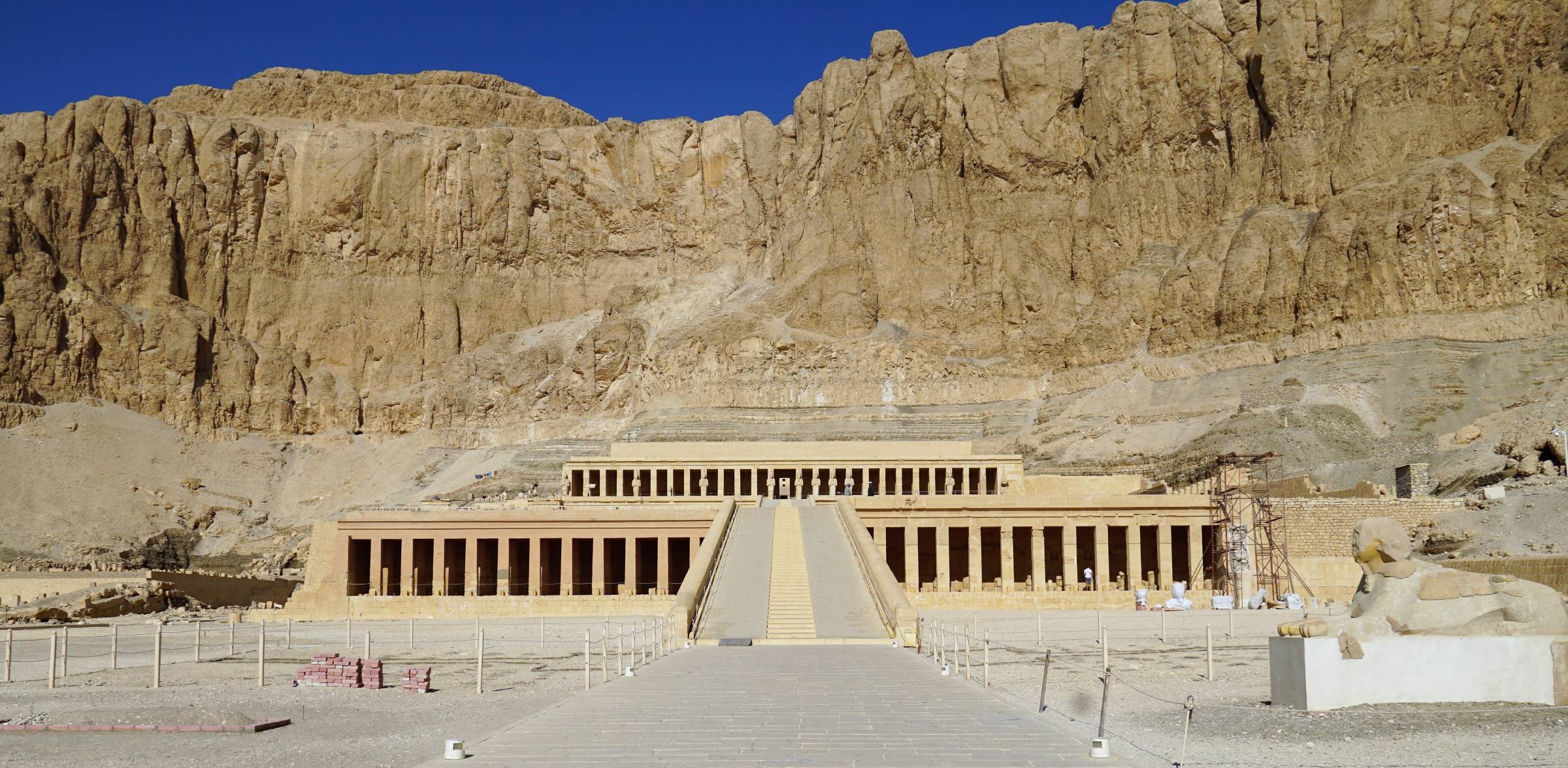
How to Make the Most of 48 Hours in Luxor Egypt
With three nights and two full days in Luxor Egypt, it’s possible to see a surprising amount in a very short time, if you plan it out. In our 48 hours on the ground in Luxor, we hit the highlights, and while we certainly could have seen more, we felt like we got a great overview of the temples, the town, and the Valley of the Kings.
We flew from Cairo to Luxor in the late afternoon and were picked up by a representative from Your Egypt Tours and brought to our hotel, the historic Winter Palace. Like touring the Pyramids, we found having a guide and driver help make our limited time more efficient.

Over the following two days, our Your Egypt Tours guide Ash and his driver would take us to see the Luxor and Karnak Temples, the tombs in the Valley of the Kings, Hatshepsut’s temple, colossi of Memnon and the house belonging to Howard Carter (who discovered King Tut’s Tomb). We also managed to walk through the local and tourist markets on our own. Below I’ll show you how we made the most of our 48 hours in Luxor.
TIP #1- Plan your time efficiently between the East Bank and the West Bank so you are not spending extra time going back and forth.
Luxor is divided into two parts; the East Bank and the West bank divided by the Nile River. Most of the “town” is located on the East bank which has tons of restaurants, shops, hotels, and two of the big sights, the Temples of Luxor and Karnak. The West Bank is home to the Valley of the Kings which includes dozens of tombs and yes, King Tut’s tomb. To reach the West bank, you have to take a ferry across the river or a long drive via a bridge south of town.
Table of Contents
Day 1-Karnak and Luxor Temples
Karnak Temple
We were some of the first people to arrive at Karnak Temple, around 8:30 am. This left it wide open during most of our visit. By the time we left, there were probably thirty full-sized tour buses and another 20 minivans in the parking lot. This is one of those times when it’s helpful to have a guide who knows where to go and when to avoid the crowds.
TIP #2: Get an early start! Many people visit Luxor as a day trip from other places or from cruise ships on the Nile. They arrive by the busload after 9 or 10 am, so if you can get to the temples early, do it!
Scroll through the images in the slideshow below to see the entrance to the complex.

Entrance to Karnak Temple 
Karnak Temple is at one end of the Avenue of the Sphinx which is being restored. The sphinxes in front of the temple have ram’s heads which is very rare. 
Karnak Temple 
Karnak Temple entrance 
Right inside the entrance to Karnak Temple. You can see the remains of ramps used to build the outer walls.
The temple is stunning and absolutely breathtaking in size and scope. Some of the pillars show graffiti from the 1800s when the temple was still buried in dirt and silt from the Nile. If you look up, it’s about 20 feet from the current ground (see photo below). Many of the pillars and stones still show original paint.
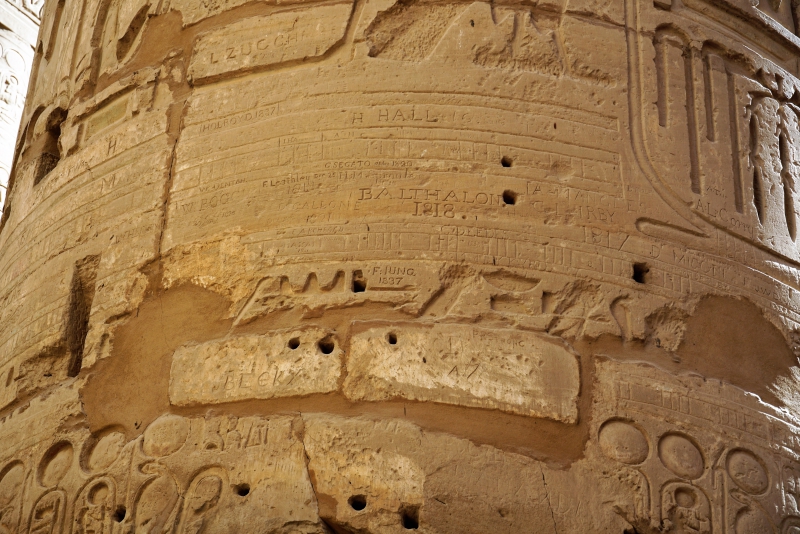

The columns are amazing. LOOK UP to see all the colors still in place.
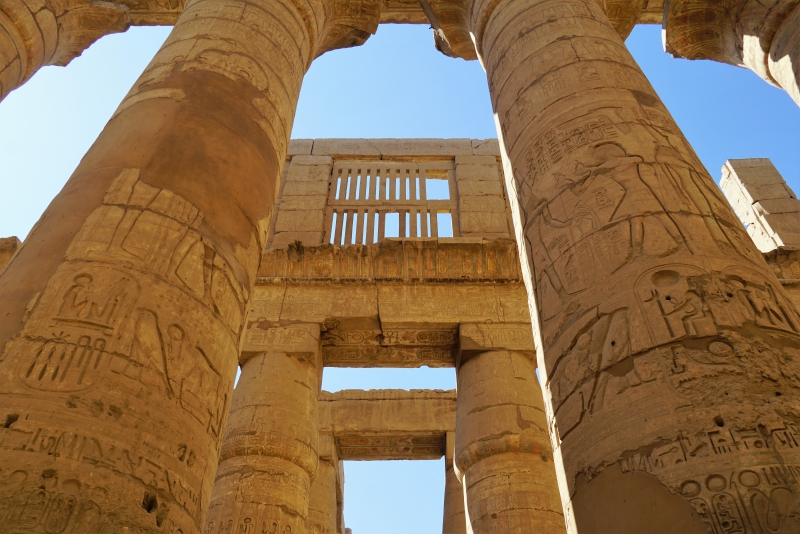
Scroll through the slideshow below to see more of the interior of the temple complex.
Temple of Luxor
The next stop was the Temple of Luxor. This one was also not too crowded yet. Here, my favorite part was seeing the remains of the Roman frescoes on top of the ancient Egyptian carvings as well as watching the restoration being done with toothbrushes. Inside, there is a mosque that was built on top of the ruins (see photos below). This temple is literally in the center of town, right on the Nile river, so it’s easy to walk here if you are touring on your own.

Click through the slideshow below to see more photos of the Temple of Luxor.


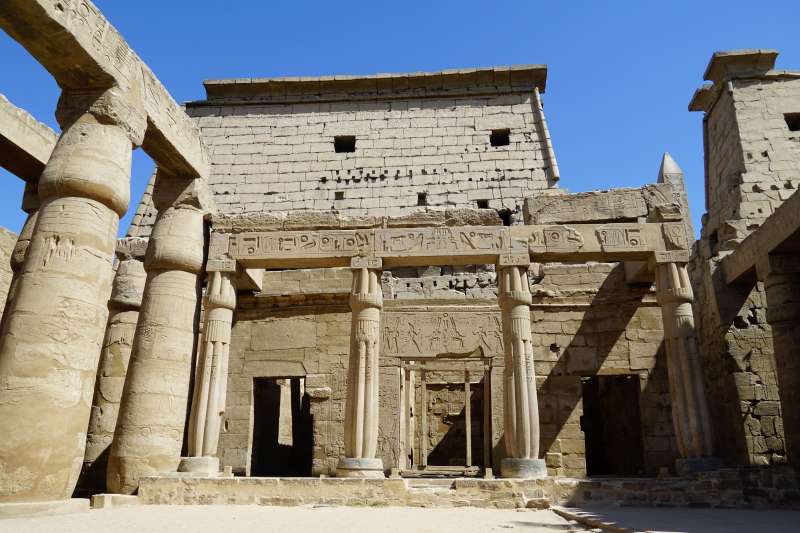

Click through the slideshow below to see more photos of the Roman frescoes and their restoration.

Visiting the Markets in Luxor
After seeing the temples in the morning, we were on our own for the afternoon. We started by walking quickly through the “tourist market” which is filled with souvenirs. That street led us into what is clearly a locals market filled with food and clothing shops as well as vendors plying their goods right out on the street. We were the only non-locals in the area. While we definitely got some curious glances, we never felt uncomfortable, until the end of our walk (keep reading..).
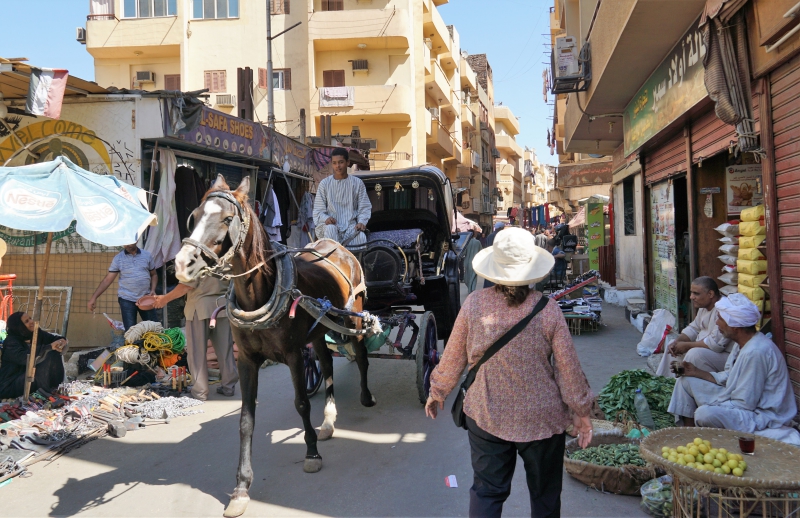
Click through the slideshow below for scenes of the market.


Challenges of walking alone in Luxor
At the end of our walk, right about where I took the photo above, a man approached us with a handful of coins and asked, “what are these worth?” I couldn’t even tell what currency they were and tried to ignore him. He followed us and kept asking the same thing, over and over. I really didn’t want to engage him, but I also wanted him to go away, so I said “I don’t know”. He continued to follow and harass us for several blocks. We told him over and over we didn’t know. People were starting to stare, at him, at us. Finally, my mom lost her cool and yelled at him to “go away!” The most baffling part was that he looked offended, but he finally left us alone.
By this time, it was very very hot out and we were hungry. We kept walking, following Google Maps to get to a restaurant we wanted to try for lunch. Every 20 feet a horse-drawn carriage would stop and ask us if we wanted a ride. We said no, again and again. They clearly could not comprehend why two women didn’t want to take a carriage ride and some just continued to ask over and over, following us down the street. In the end, we walked in a giant circle because the street we were trying to find on the map was closed. This was an exhausting endeavor that took us well over a mile out of our way in 90 degrees full sun.
Tip #3- Try not to lose your cool. Aggressive street vendors seem to be the norm in Egypt. I know it doesn’t feel “polite” not to respond, but if you engage, they won’t leave you alone, even if you say “no thank you” a million times. Also, if you’re walking, plan out your route ahead of time. 🙂
Day 2- The Colossi of Memnon, Hatshepsut’s Temple, and the Valley of the Kings
The Colossi of Memnon
The day began with a ferry boat trip across the river to meet the waiting van which would take us and our guide to the Valley of the Kings, stopping first at the Colossi of Memnon.

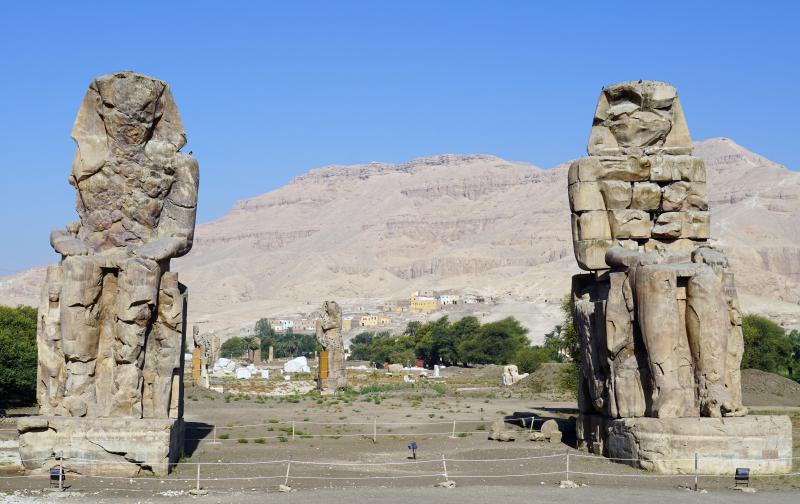
After seeing the Colossi, we stopped to buy extra tickets for the Valley of the Kings. Our basic admission ticket was included in the tour, but we wanted to add on things like the photo pass for inside the tombs (300 EP for 3 sites) plus an extra ticket to enter King Tut’s tomb (+200 EP) and the Howard Carter house.
Tip #4: If you want to see more than 3 tombs you will need to purchase another ticket. If you want to take photos inside the tombs you will need an extra ticket which only covers 3 tombs. The ticket will be checked and hole-punched at every entrance.
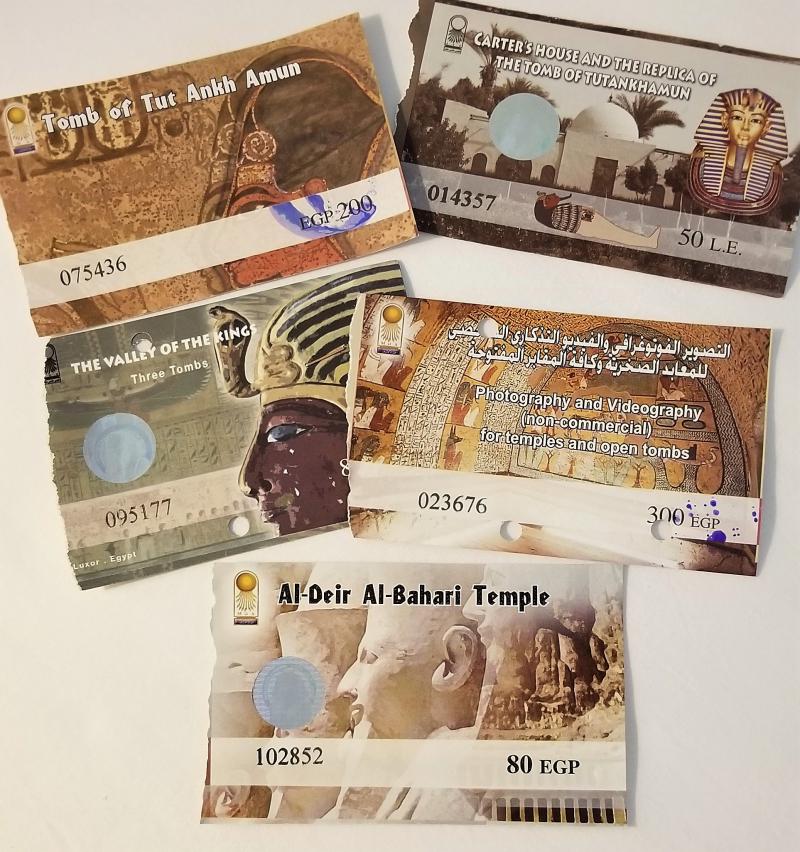
Hatshepsut’s Temple
Ever since taking AP Art History in high school I’ve wanted to see the temple of Queen Hatshepsut and I’m here to say, it did not disappoint in the least. Once again, we arrived early to beat the crowds and at times, it felt like we had the place to ourselves.
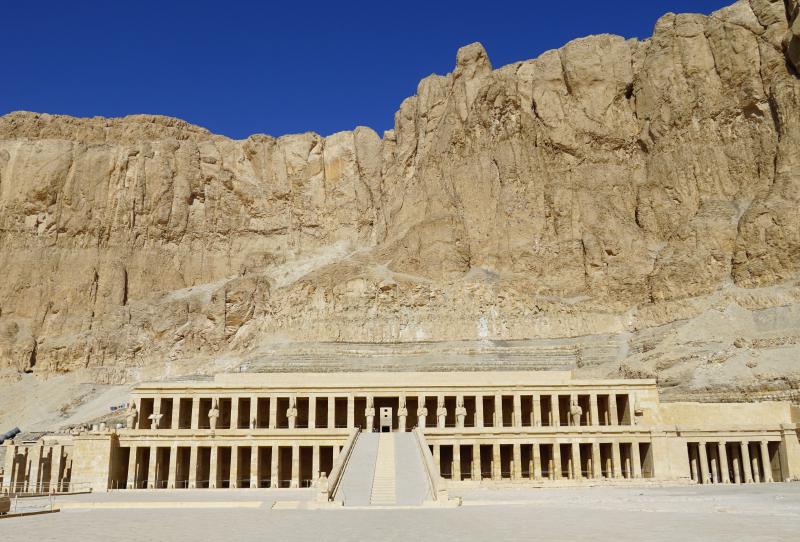
Queen Hatshepsut was a female pharaoh who ruled Egypt almost 3500 years ago. She was so powerful that it’s said she ruled “as a man” and many of the images in her mortuary tomb portray her with masculine features. If you want to read more about the temple, this article does it much better justice than I can.
Click through the slideshow below for scenes from inside the temple.

Inside the Temple of Queen Hatshepsut. The paint looks as vibrant as it might have 3500 years ago. 
Temple of Queen Hatshepsut; these statues are of her, presenting as a male Pharaoh 
Inside the Temple of Queen Hatshepsut 
Temple of Queen Hatshepsut 
Temple of Queen Hatshepsut 
Temple of Queen Hatshepsut 
Temple of Queen Hatshepsut 
Temple of Queen Hatshepsut

The Valley of the Kings
From here we moved on to the Valley of the Kings. At the entrance, you get your tickets and then on a little tram bus that takes you closer to the tombs. From there, it’s your choice as to which 3 you enter. To be honest, I didn’t do much research on which ones to see because apparently they change which ones are open frequently. So we relied on our guide to recommend which ones. We also thought, “we’ve come all this way, how can we NOT see King Tut’s tomb?” so we paid for that extra ticket.
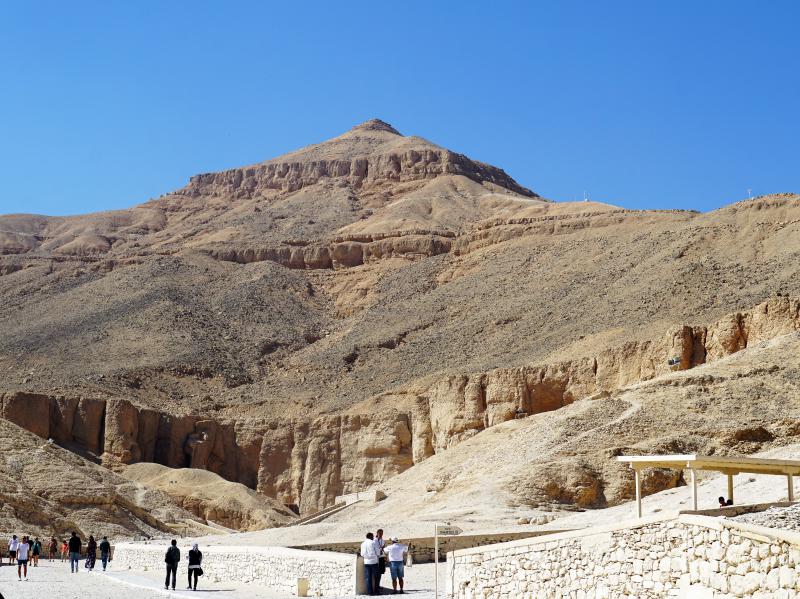
Our guide suggested the tombs of Rames IV, Ramses IX and Ramses III, plus King Tut. With the added photo pass I purchased I was able to take pictures inside all the Ramses tombs, but no photos are allowed inside Tut’s tomb. And no, I did not try, although many people did. Photos are out there if you want them.
Note; guides are not allowed down into the tombs (like at the pyramids) and will wait outside for you.
Click through the slideshow below for scenes from inside the tomb of Ramses IV.

Ceiling of the Tomb of Ramses IV 
Entrance corridor to the Tomb of Ramses IV 
Ceiling mural showing the path of the sun in the Tomb of Ramses IV 
Ceiling mural showing the path of the sun in the Tomb of Ramses IV 
Much “younger” than the tomb, but still ancient, Coptic Christian graffiti on the walls of the entrance. 
Tomb of Ramses IV
One of the things that struck me the most about the tombs was how large the passageways were. I was afraid it would be claustrophobic but it wasn’t.
Click through the slideshow below for scenes from inside the tomb of Ramses IX.
Click through the slideshow below for scenes from inside the tomb of Ramses III.
The tombs and the passageways were filled with all the goods the Pharoah would need in the afterlife which the pharaohs started building as soon as they ascended to the throne. For this reason, King Tut’s tomb was very small, because he was only 17 when he died. The tomb is so special because it’s one of the only ones found fully intact in modern-day times. The number of riches found inside was staggering, and can you imagine what the larger tombs would have held if not plundered by grave robbers. It is said that there could be many more tombs yet unearthed in the Valley of the Kings…
The Howard Carter House
Howard Carter is the famous British Egyptologist and archaeologist who discovered King Tut’s tomb in 1922. Carter’s house is very close to the Valley of the Kings on the west bank of Luxor and is now a museum. It was a fairly quick visit, maybe 20 minutes, but the house shows how he lived in the 1920s and ’30s and contains a lot of his personal items and furniture. Seeing this house was not on our original itinerary. We had asked to see the house in lieu of a papyrus “factory” visit and I’m happy we did.
Click through the slideshow below for photos of the Howard Carter House.
Pin the image below now to save this post for later!

Have you ever planned a trip to Egypt? Thinking of doing it?
Leave me a comment or question at the bottom and make my day!
Any post on this site may contain affiliate links. Thank you for supporting wired2theworld by using our links to shop, book hotels, or organize tours. If you use them, they cost you nothing extra but we may make a small commission that helps us to continue to provide helpful and free content.
NOTE: Everything on this tour was paid for by us. Nothing was complimentary or given in exchange for reviews or promotions.

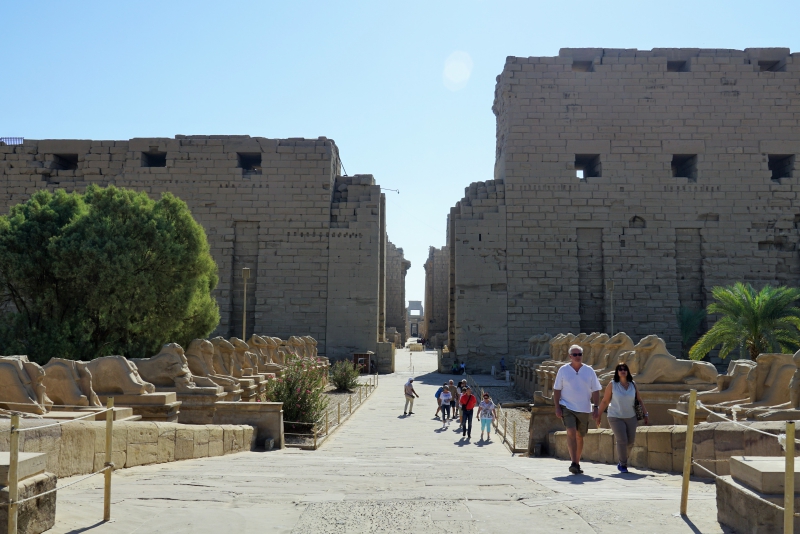
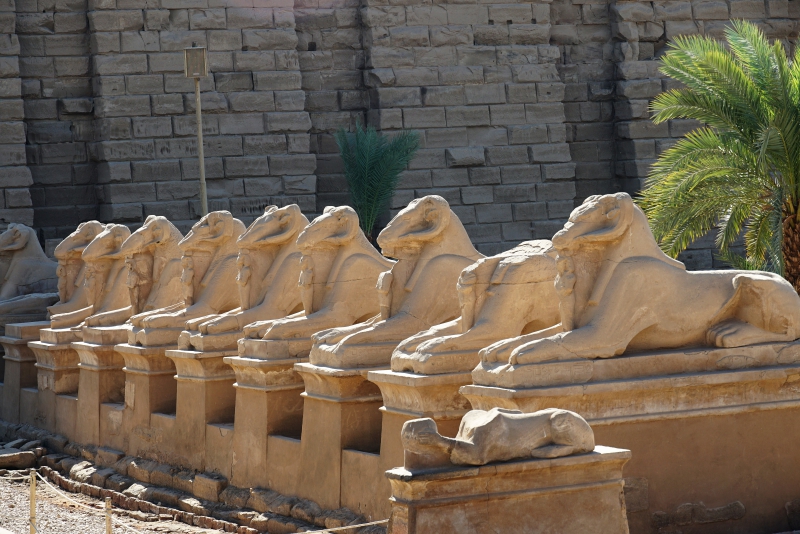
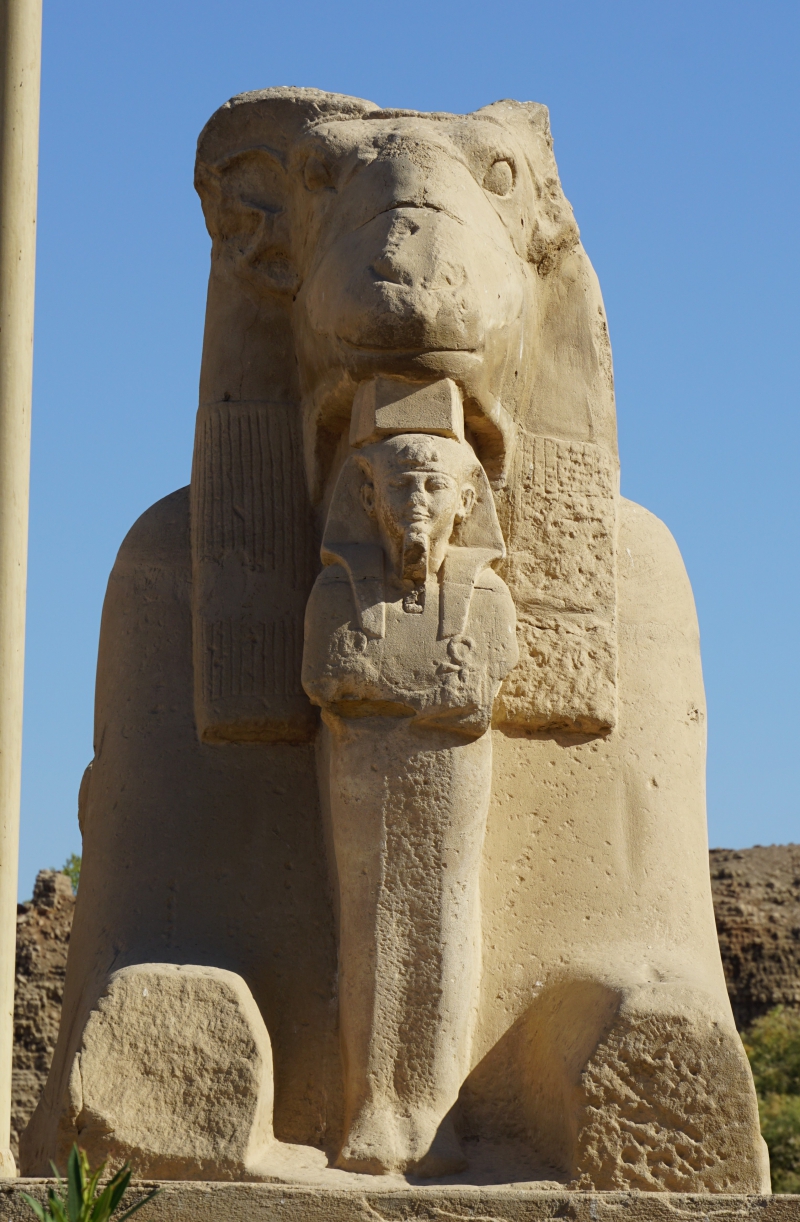
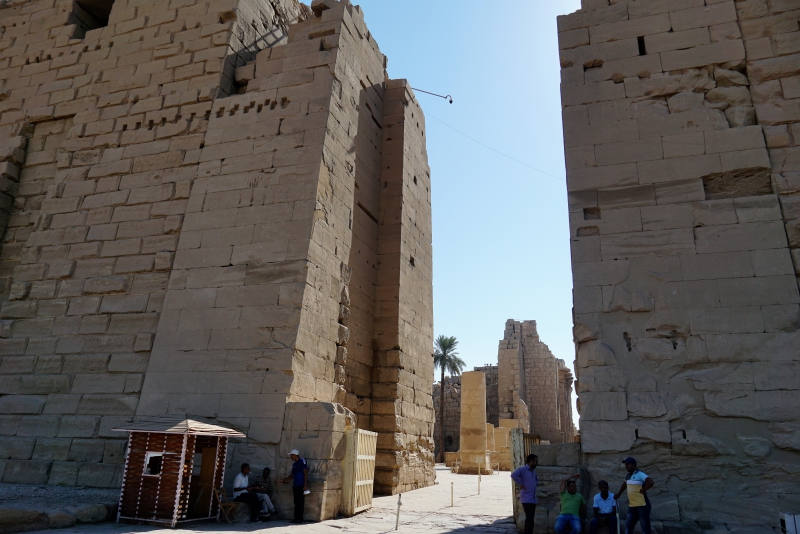
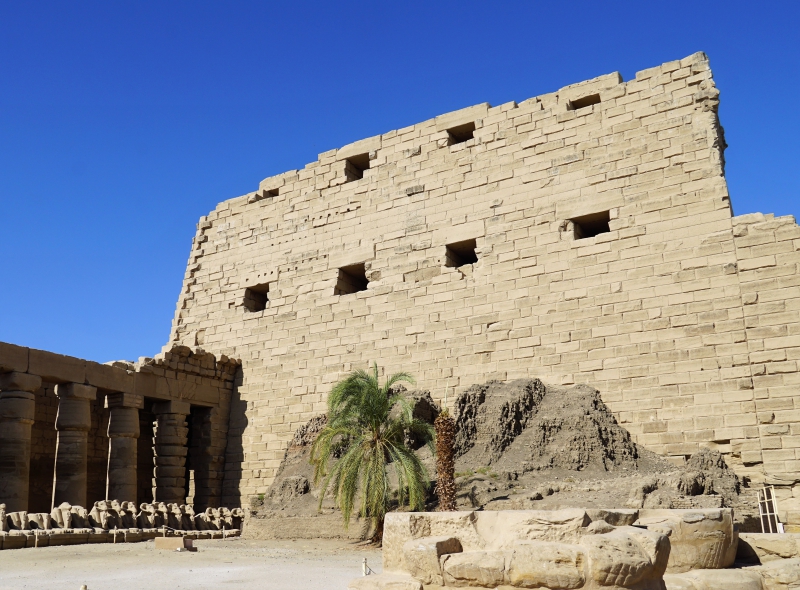
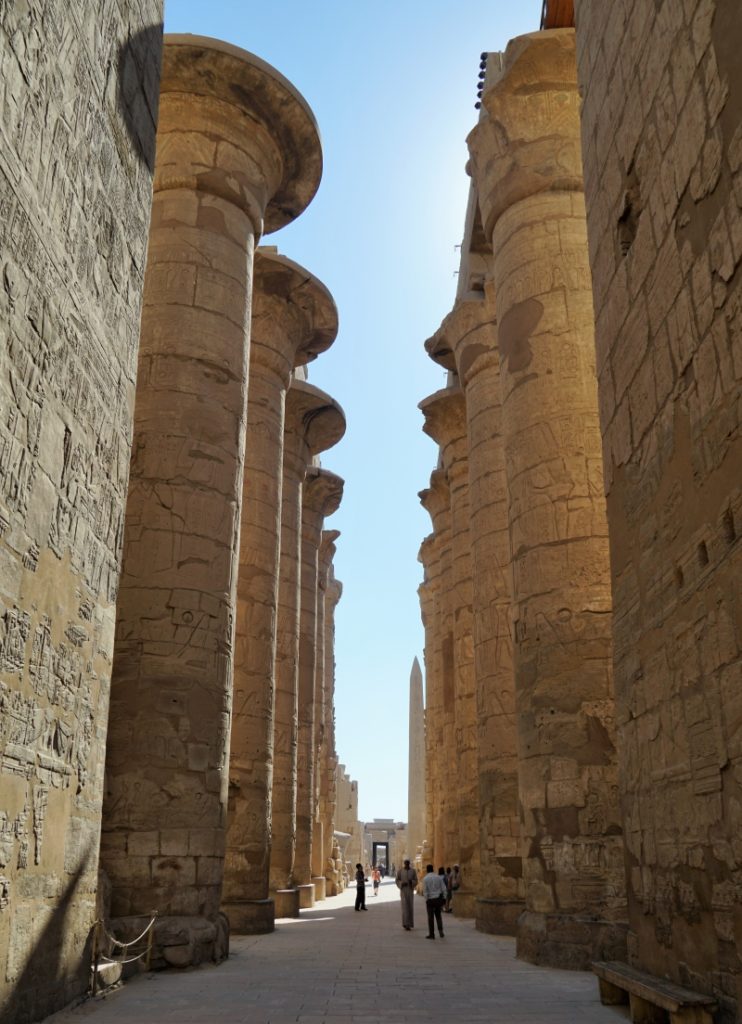
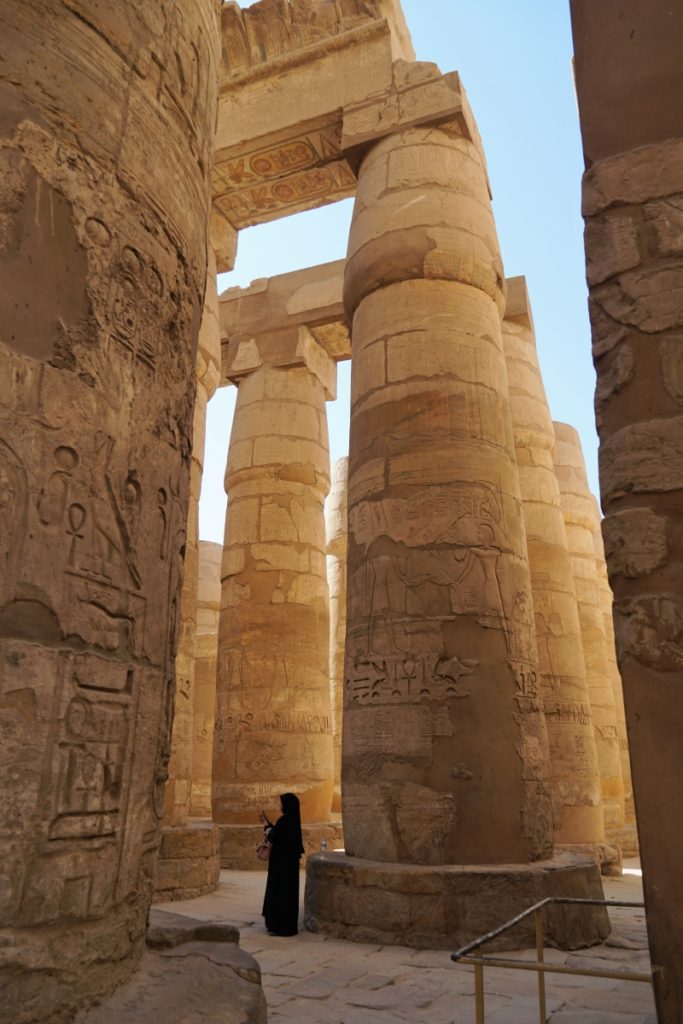
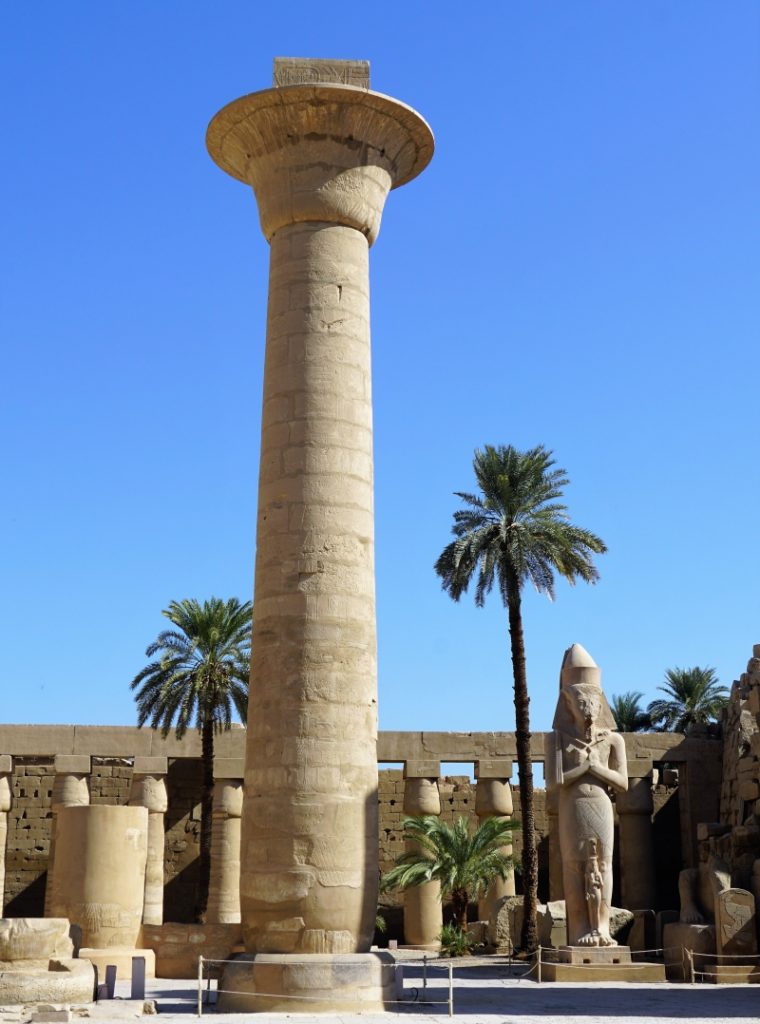
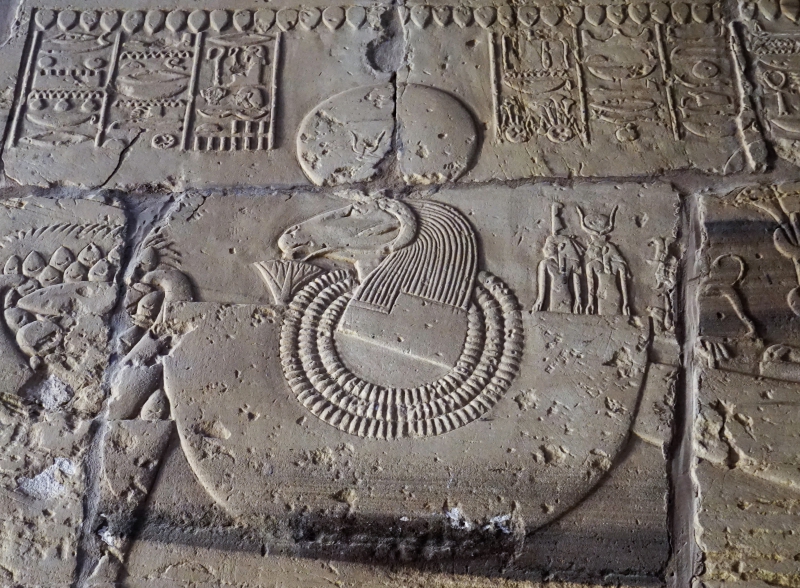
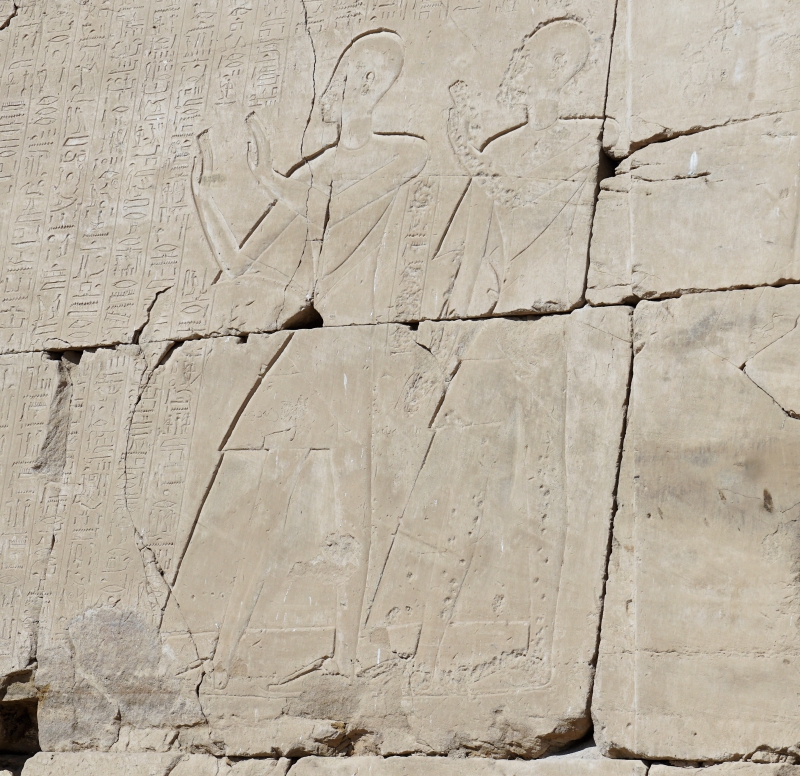
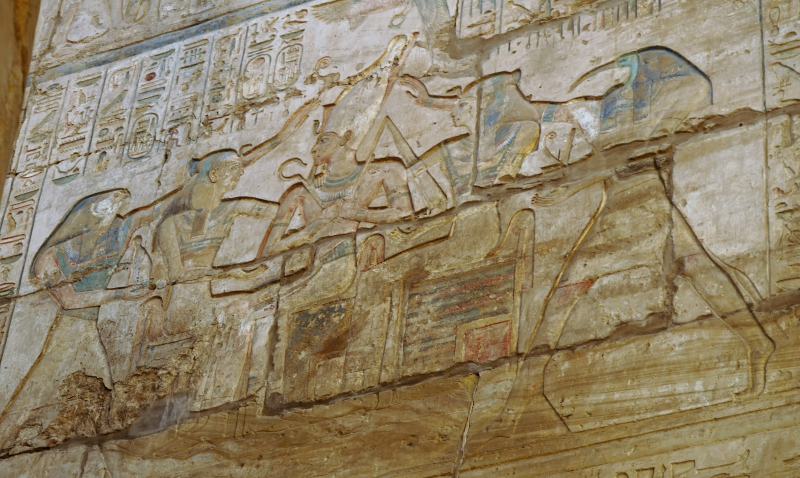
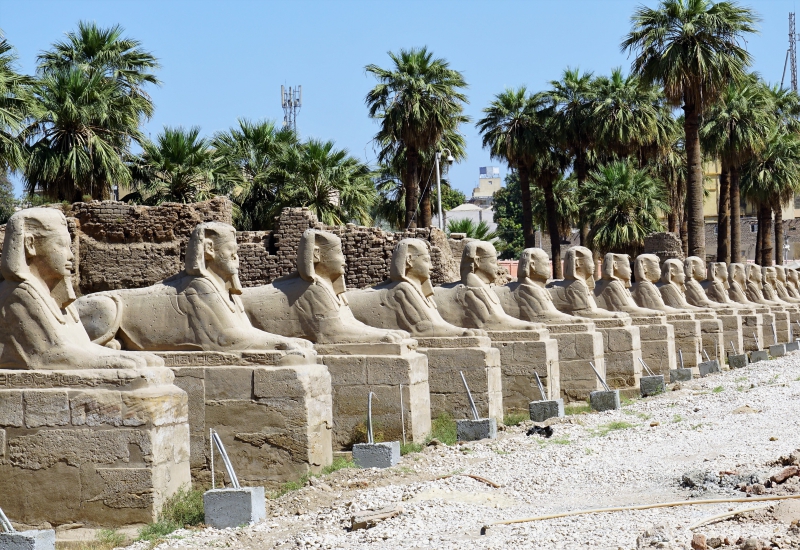
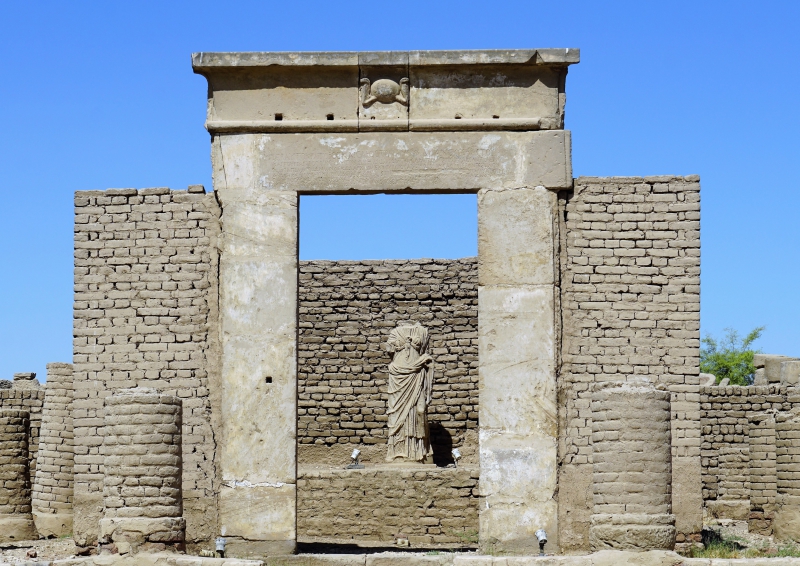
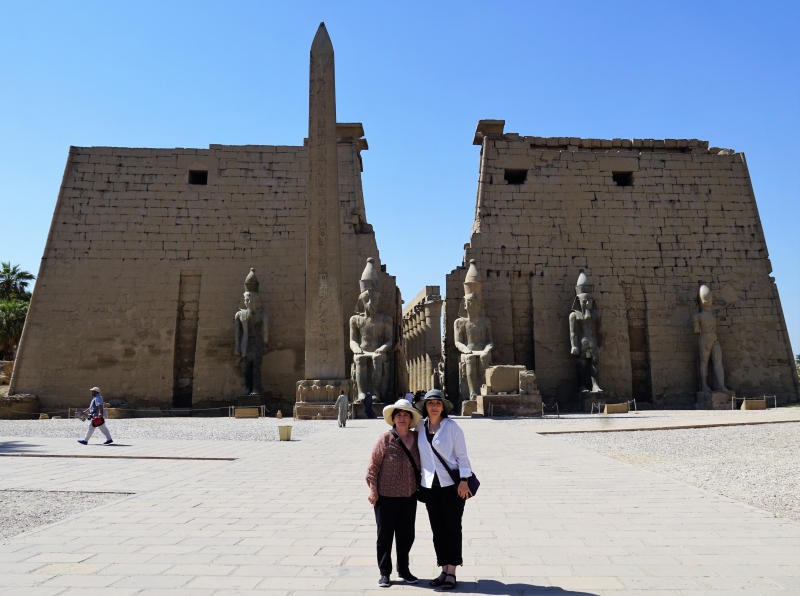
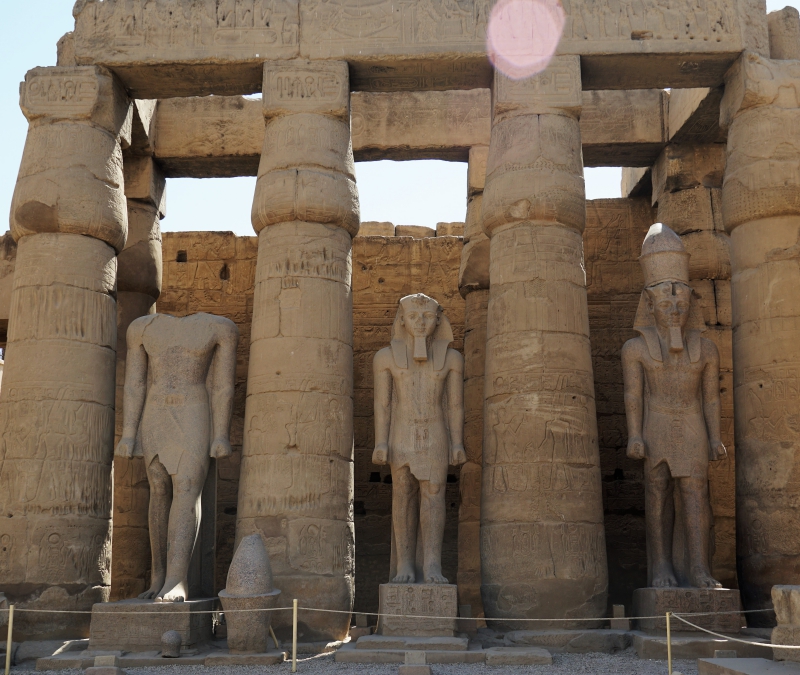
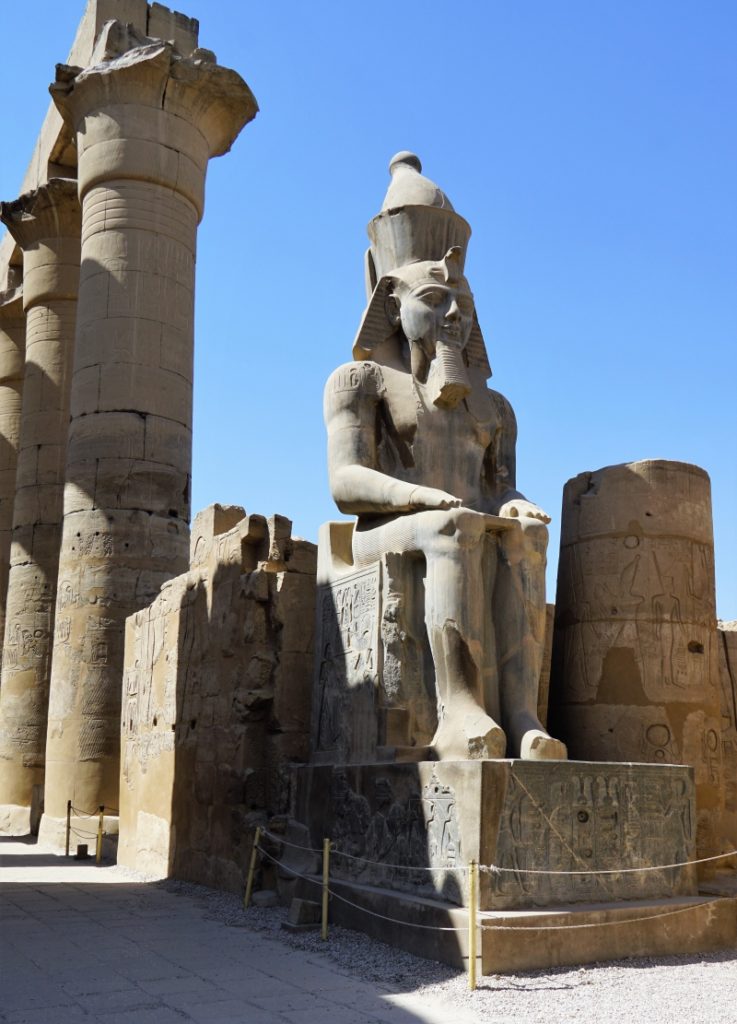
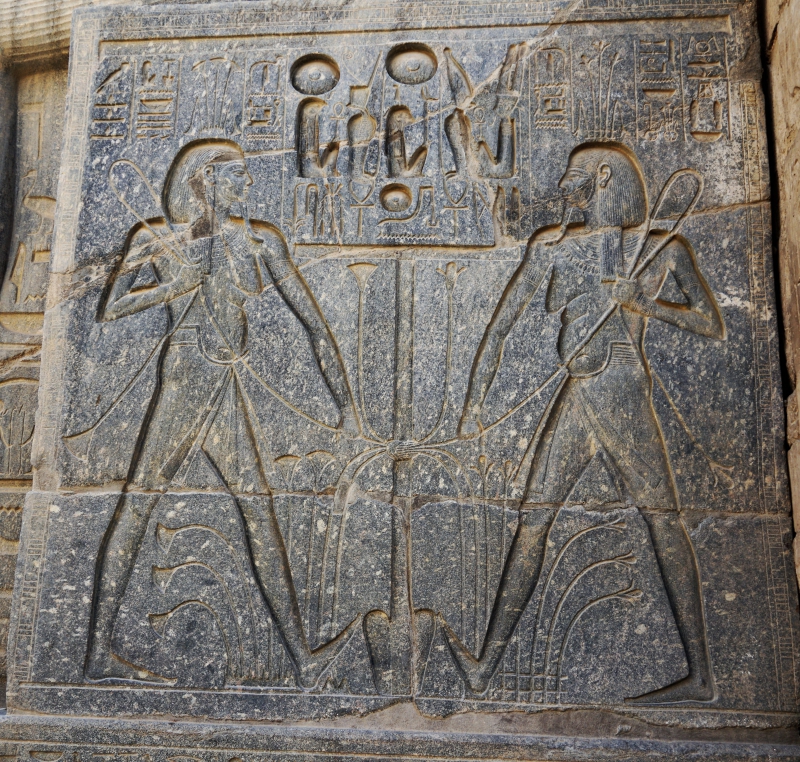
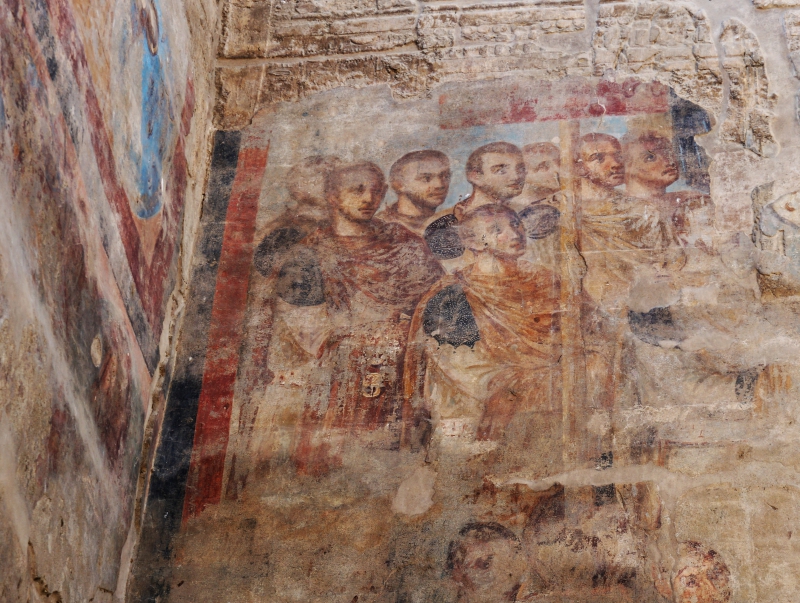
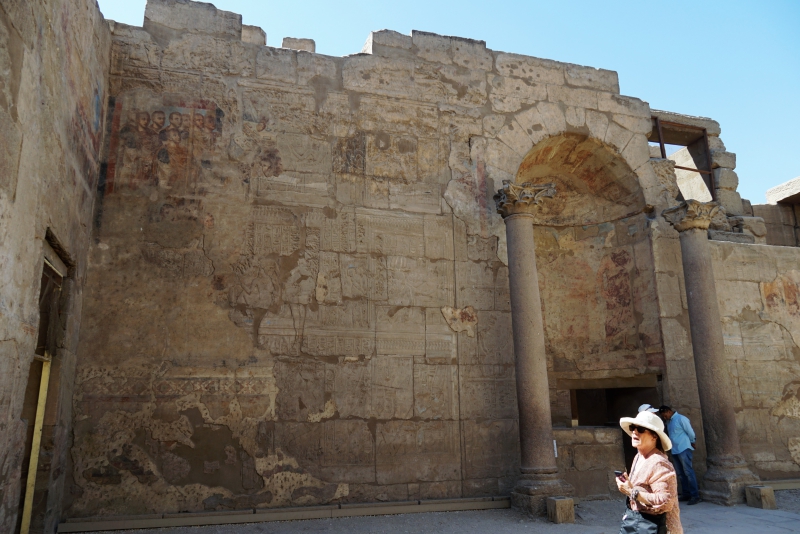
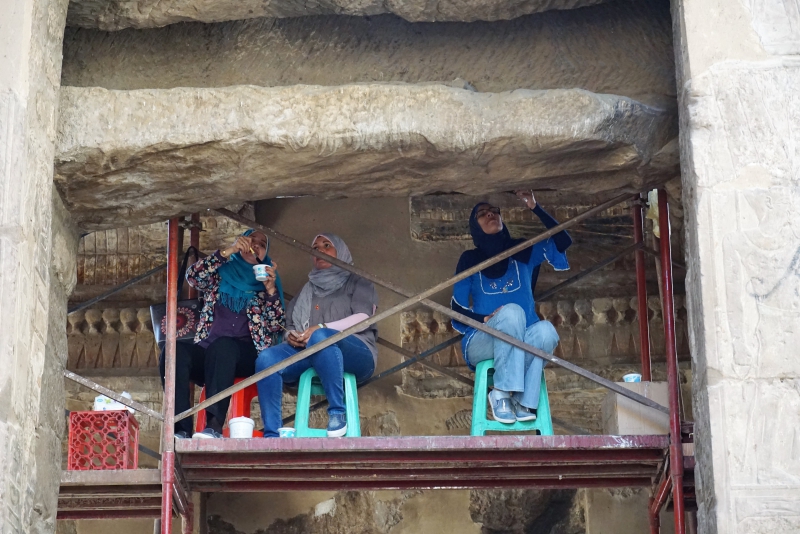
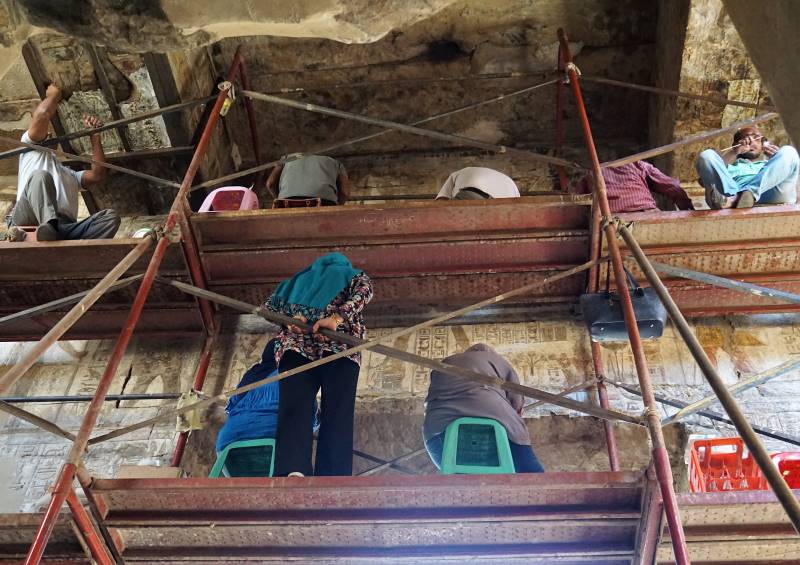
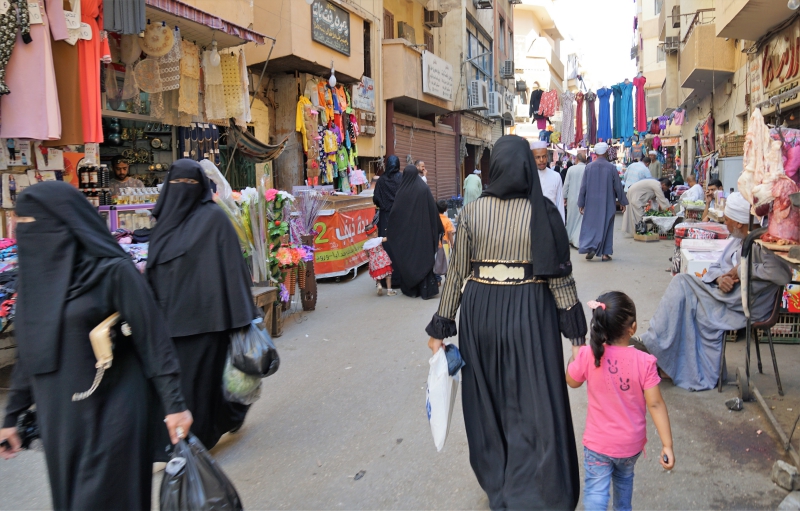
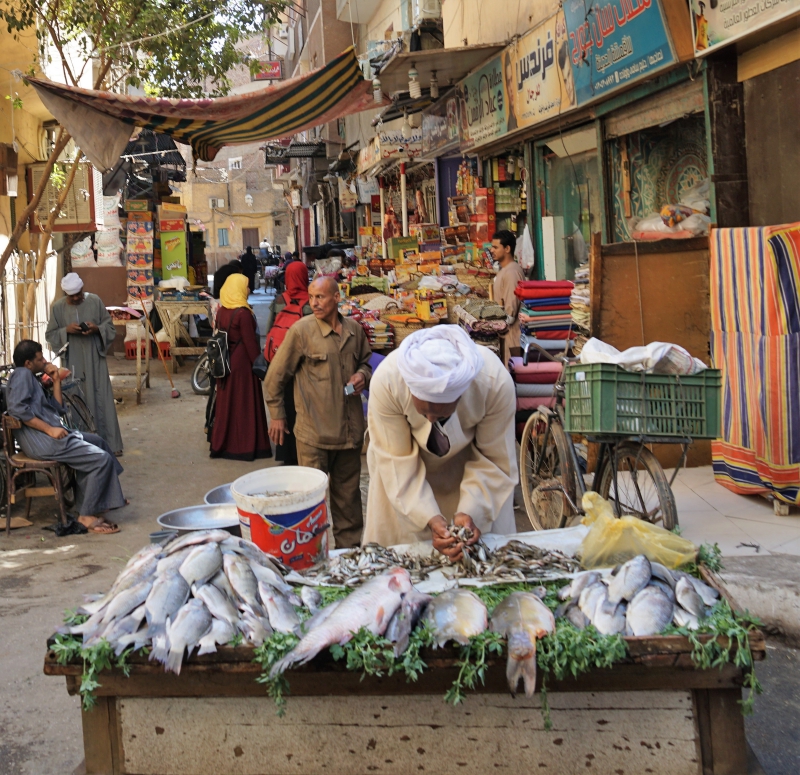

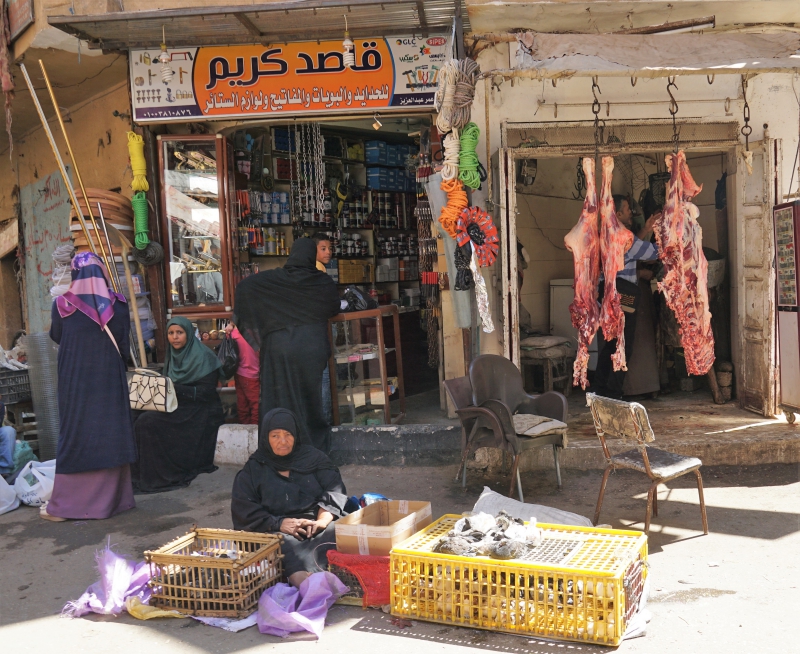
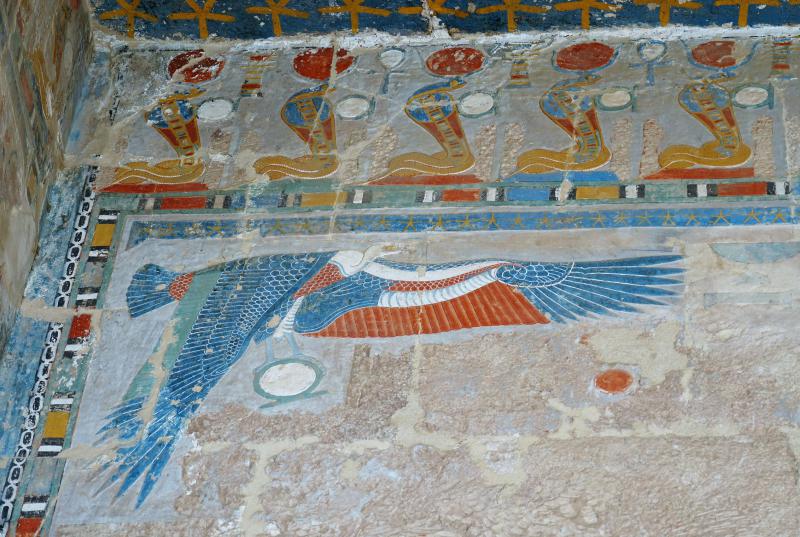
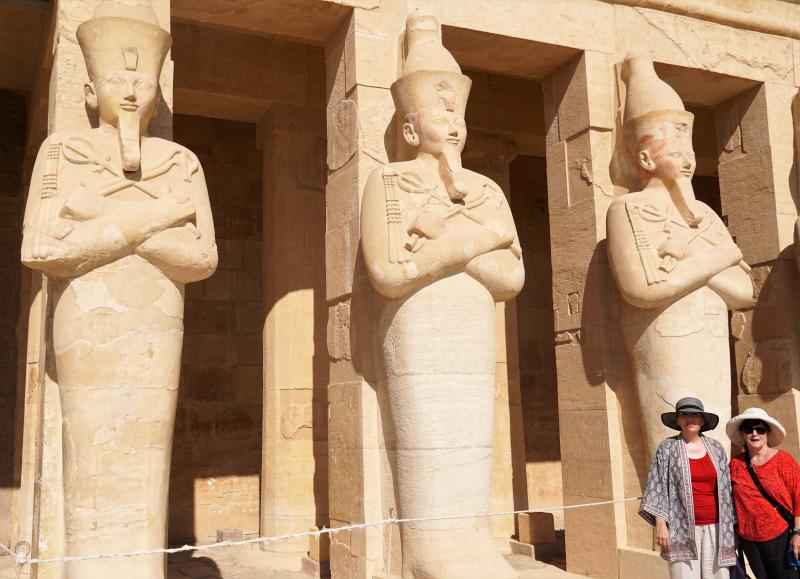
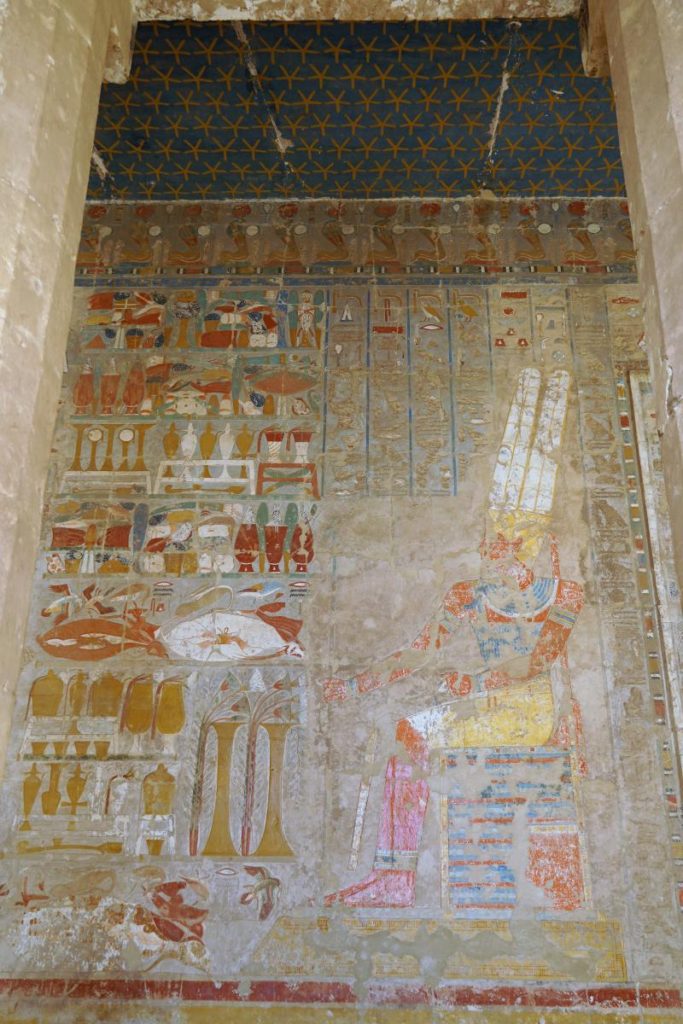
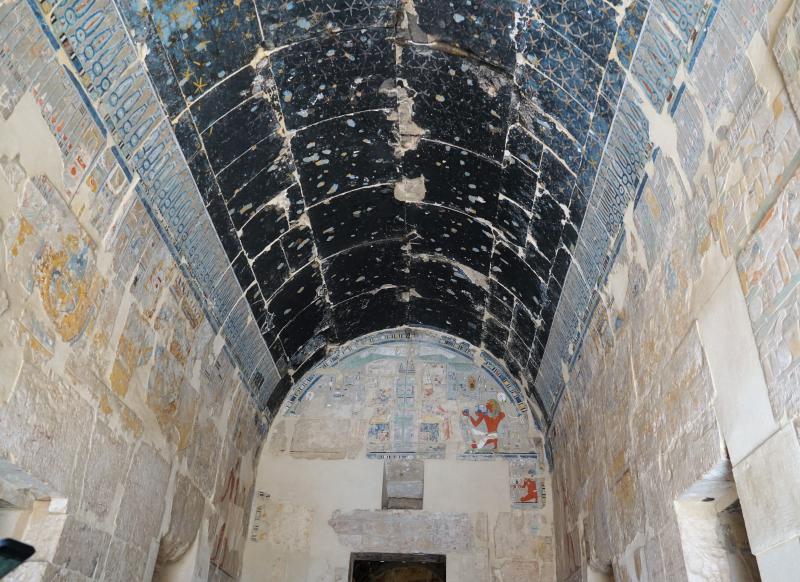
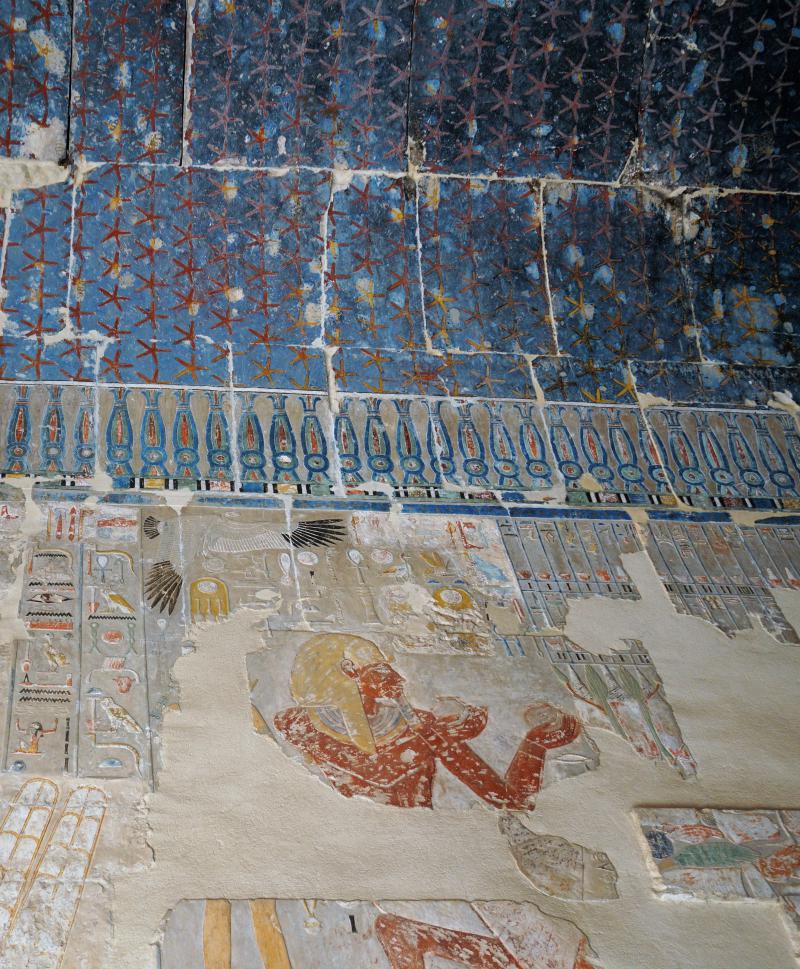
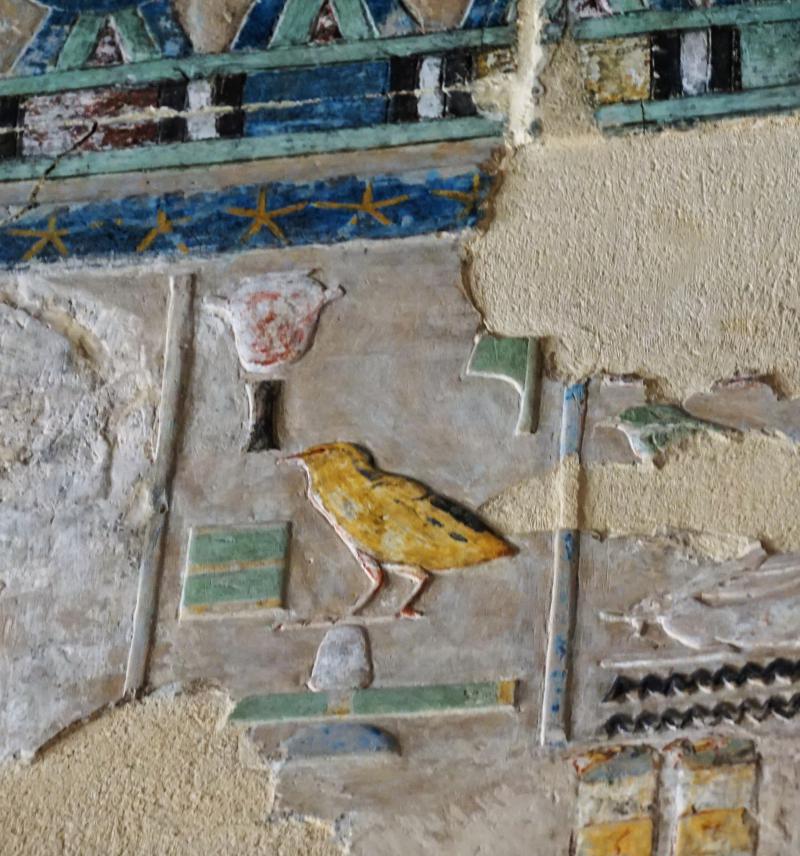
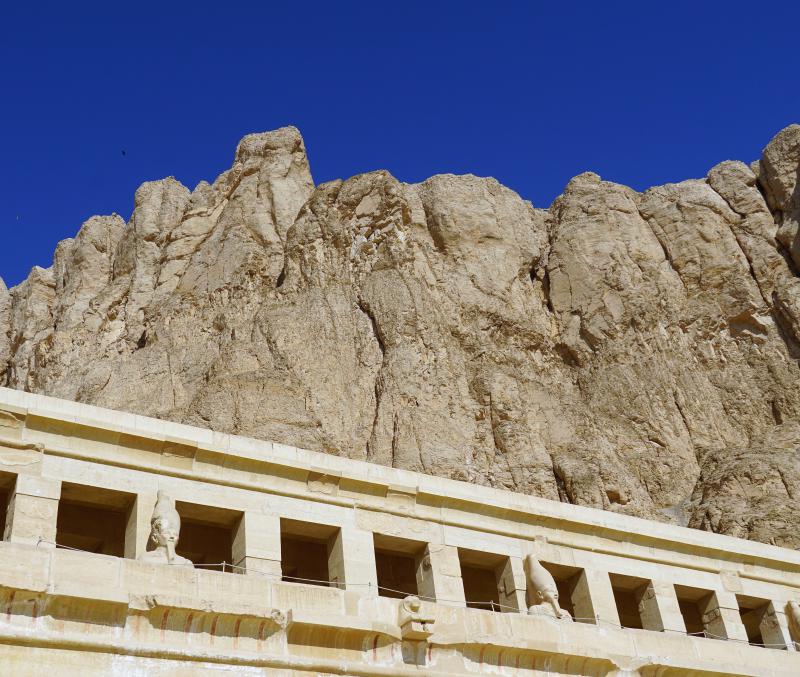
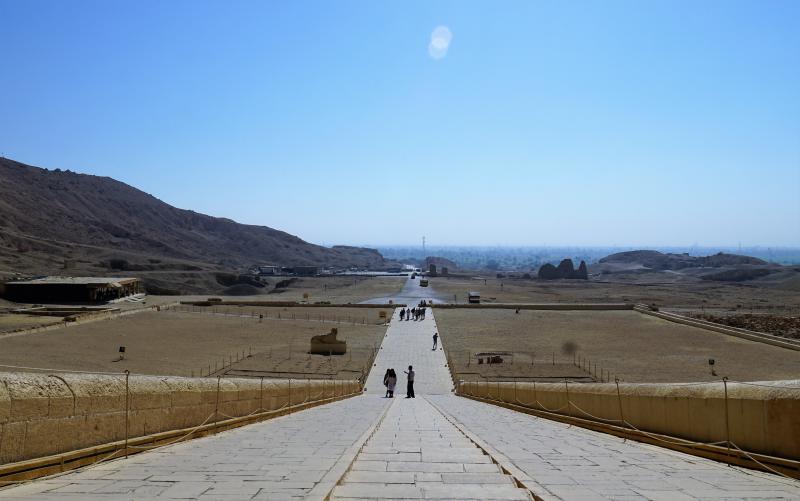
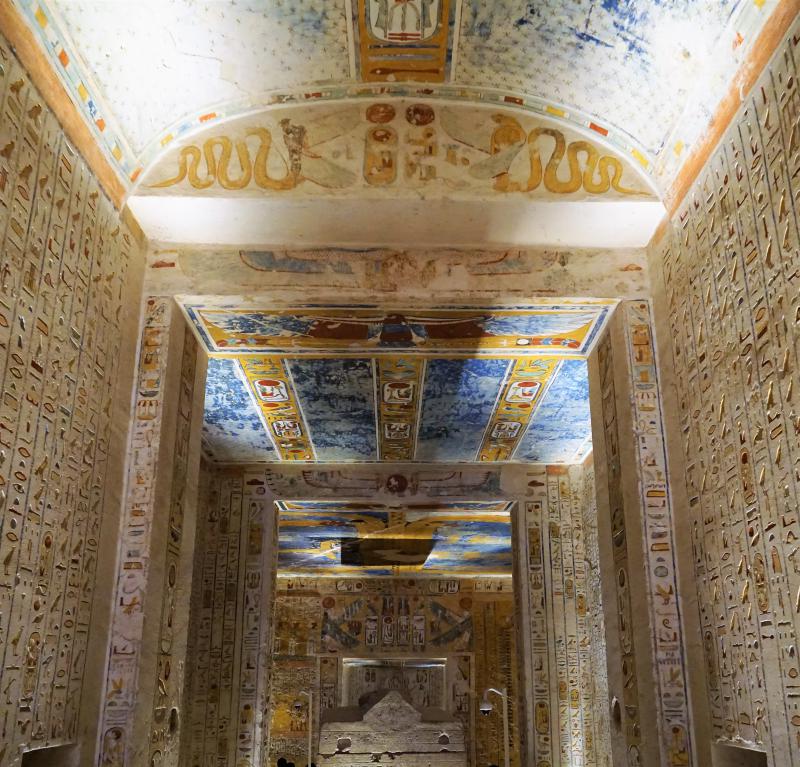
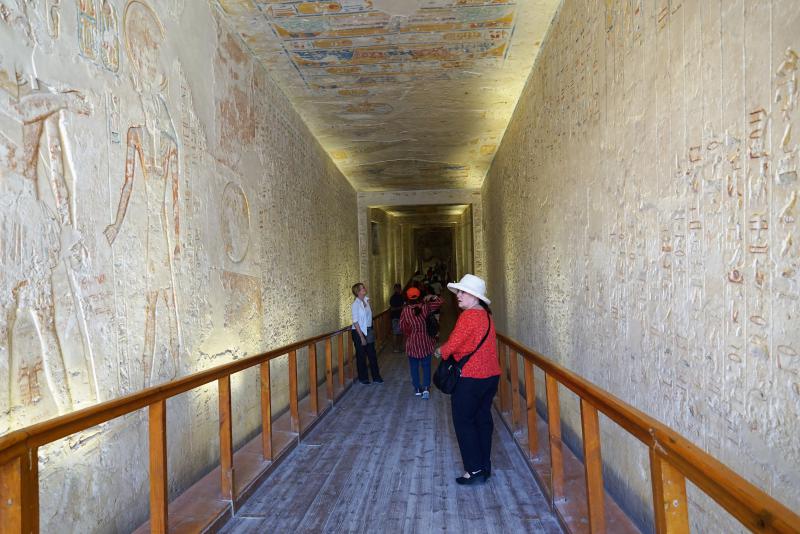
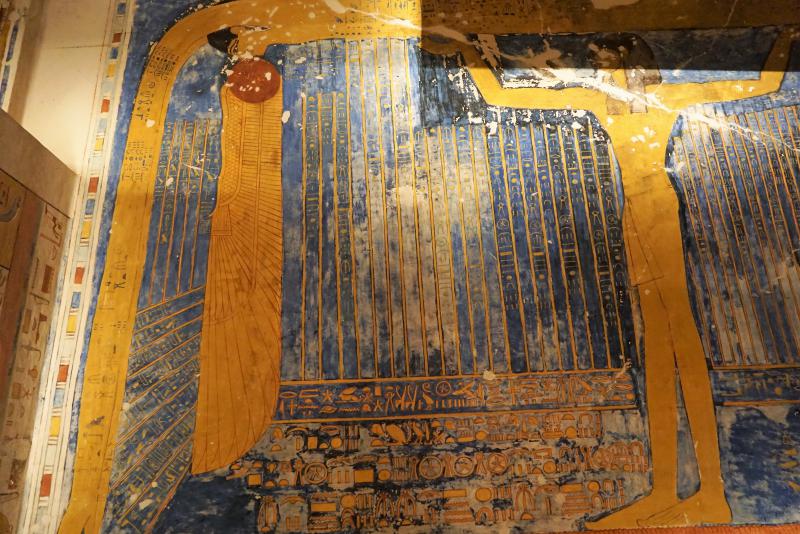
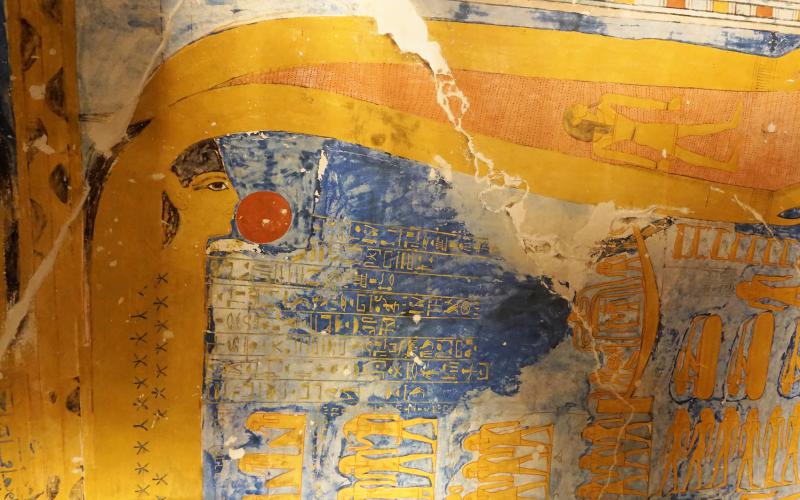
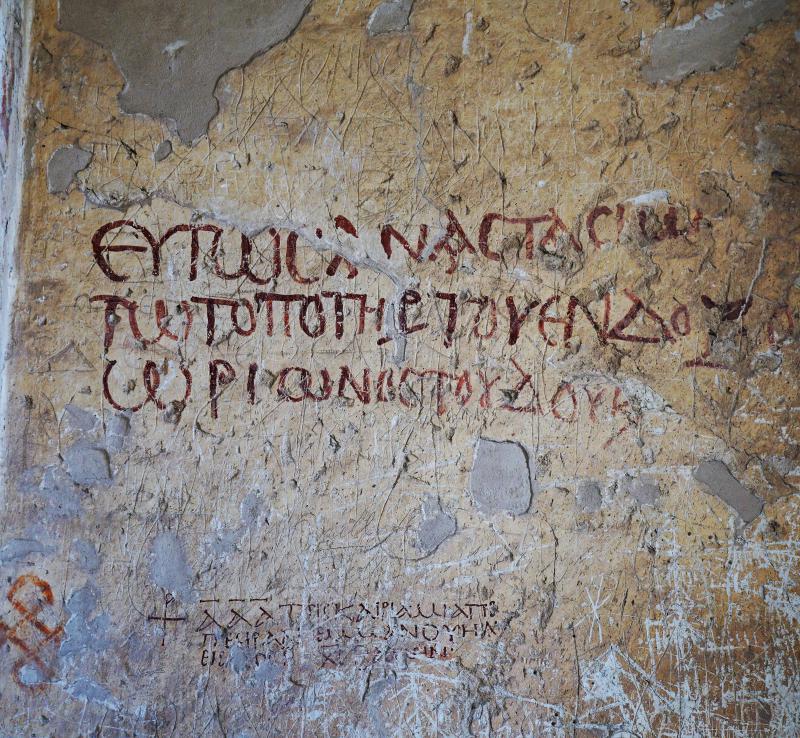
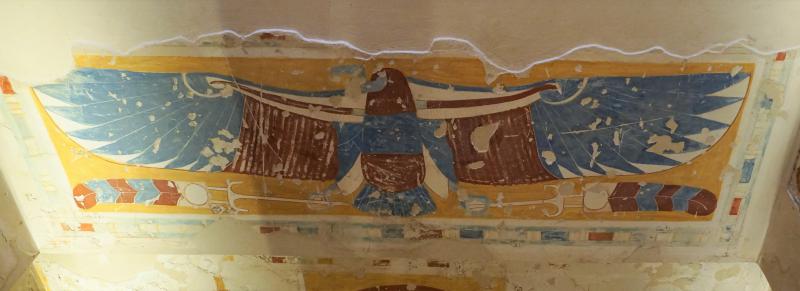
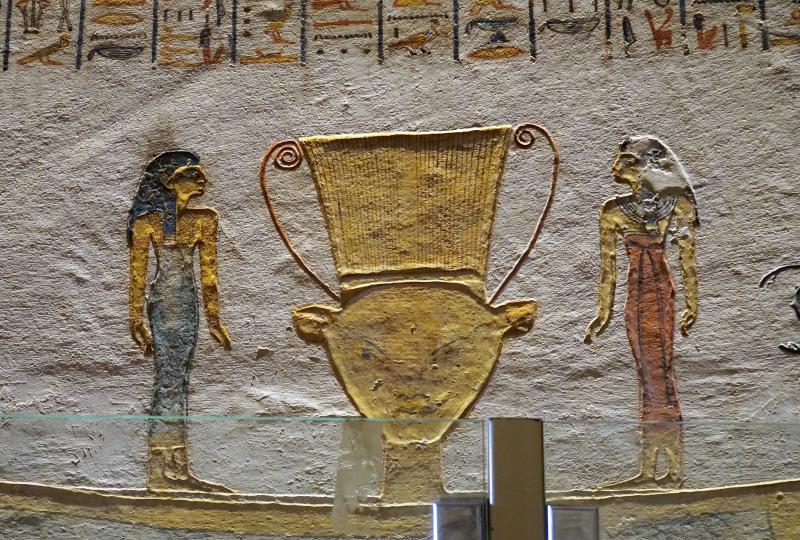
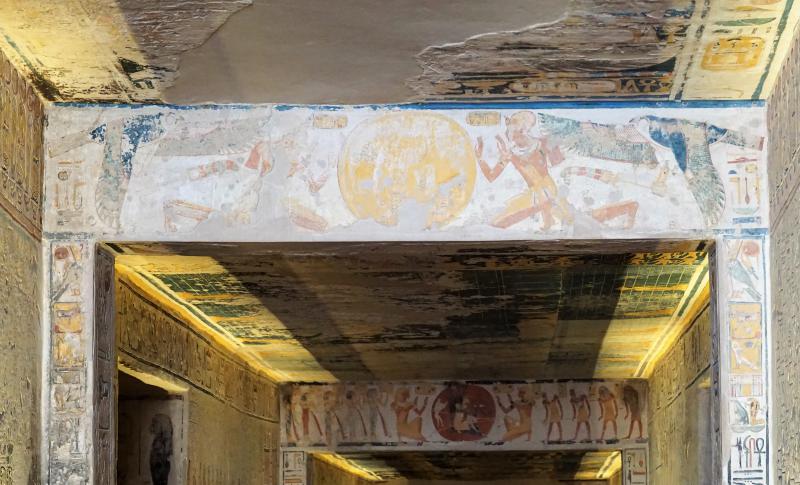
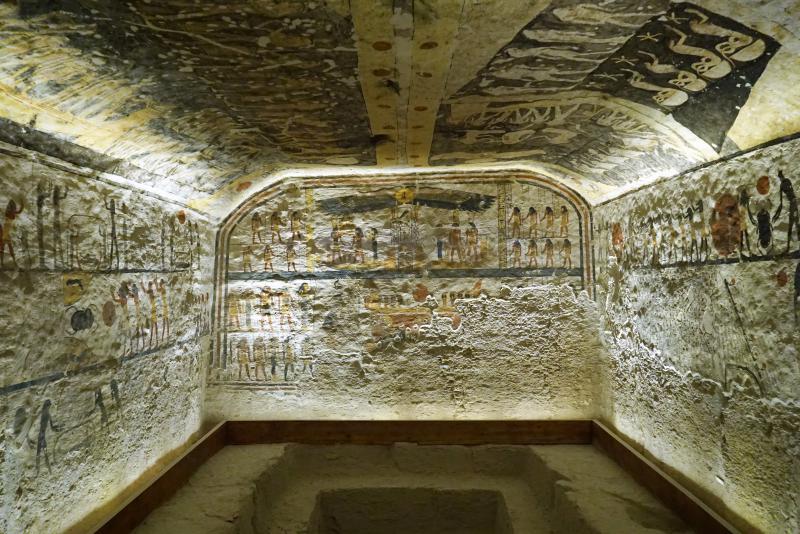
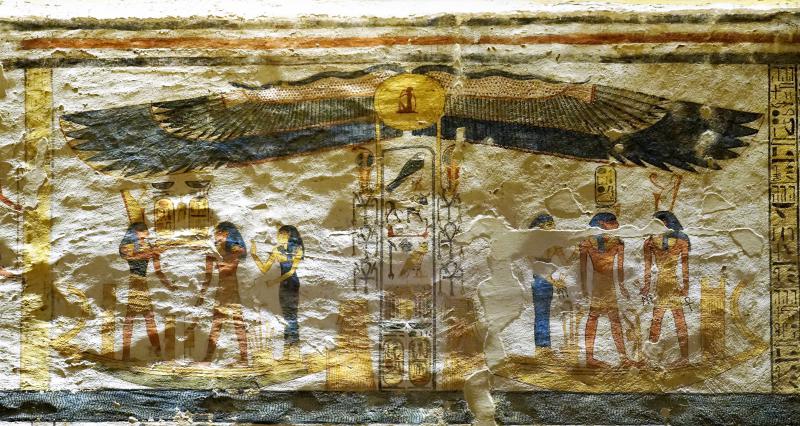
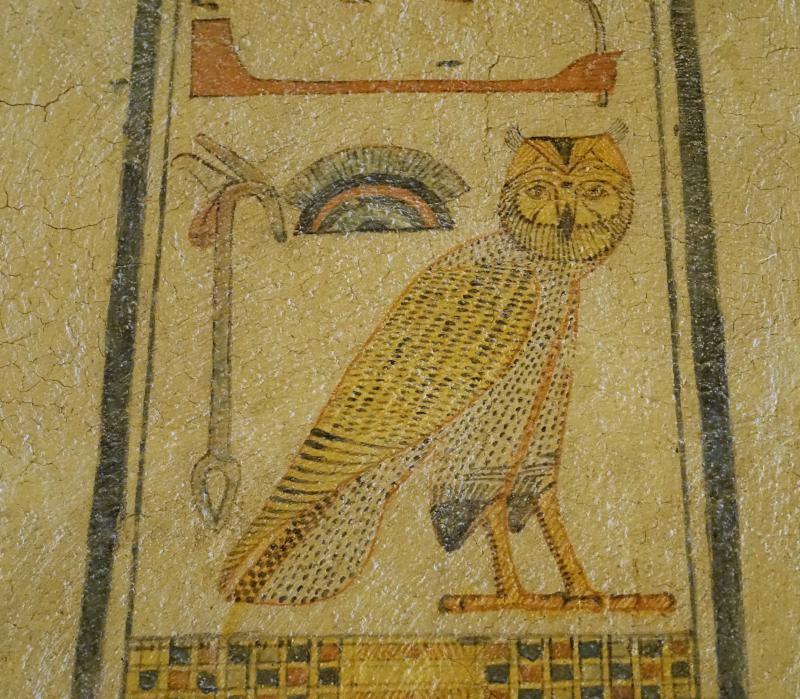
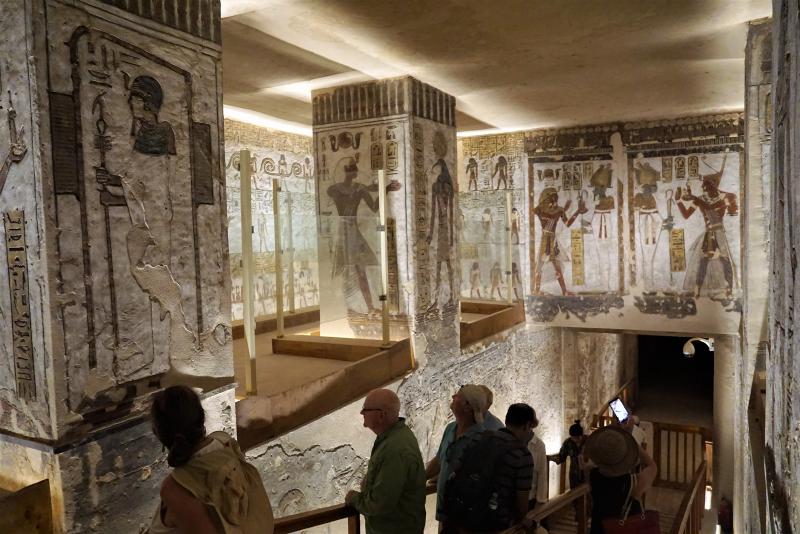
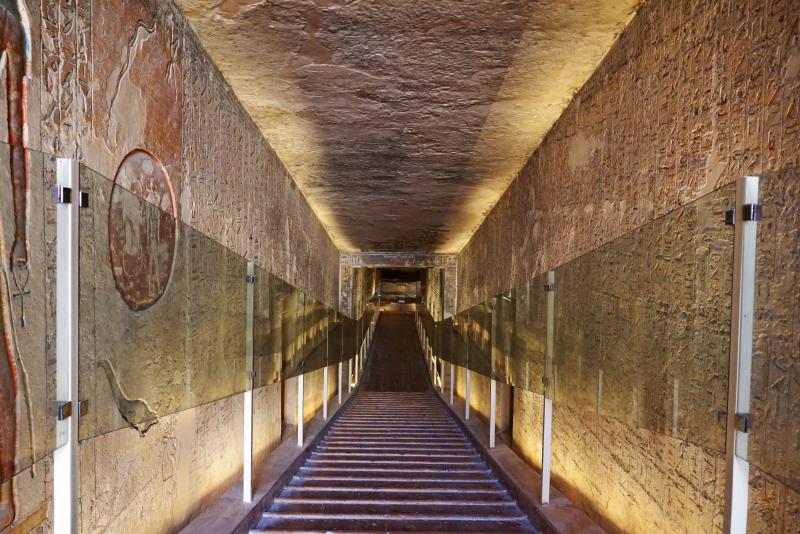
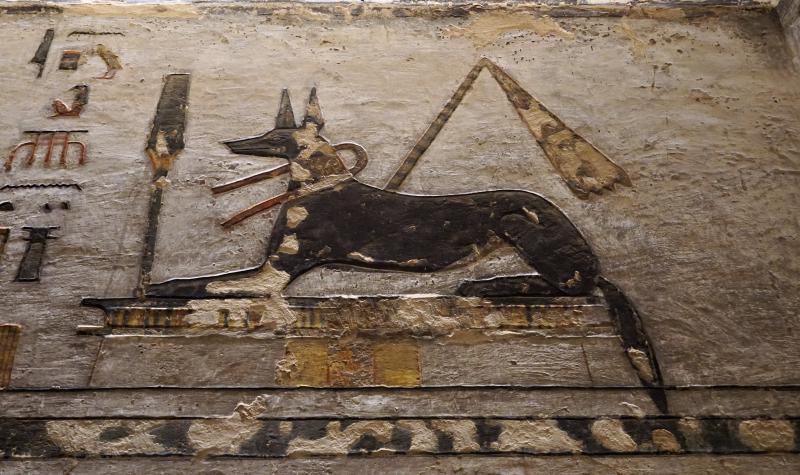
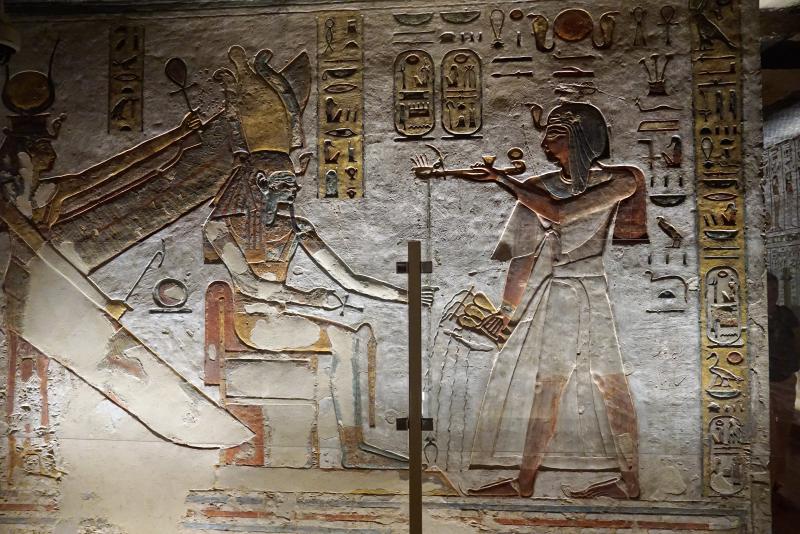
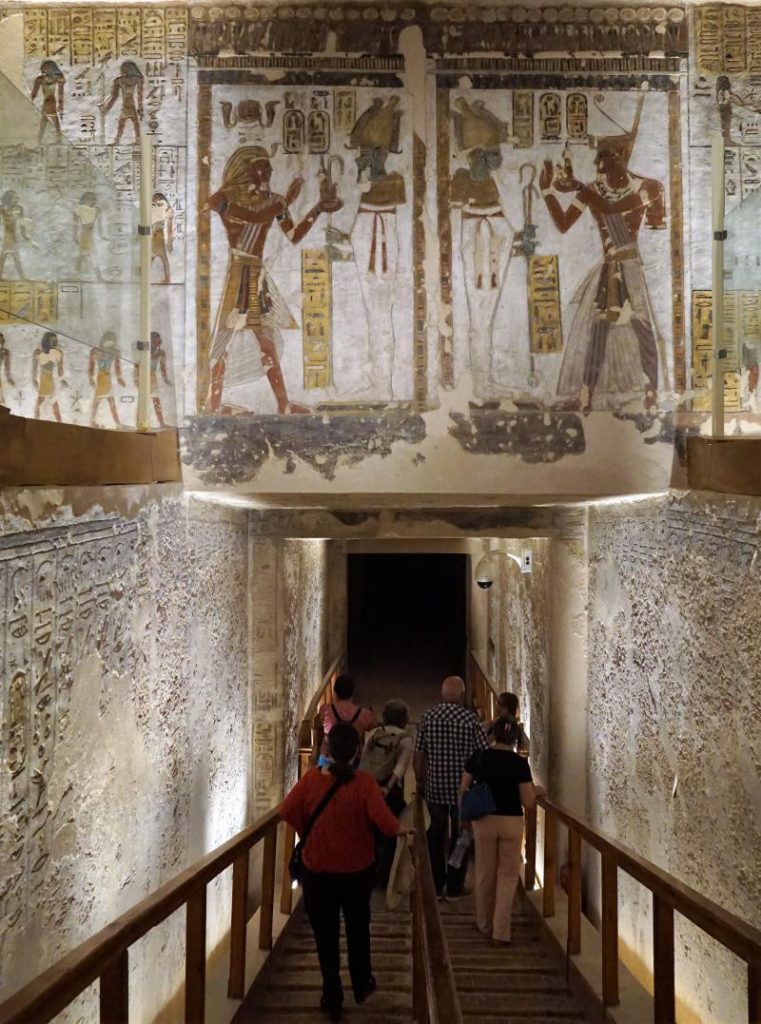
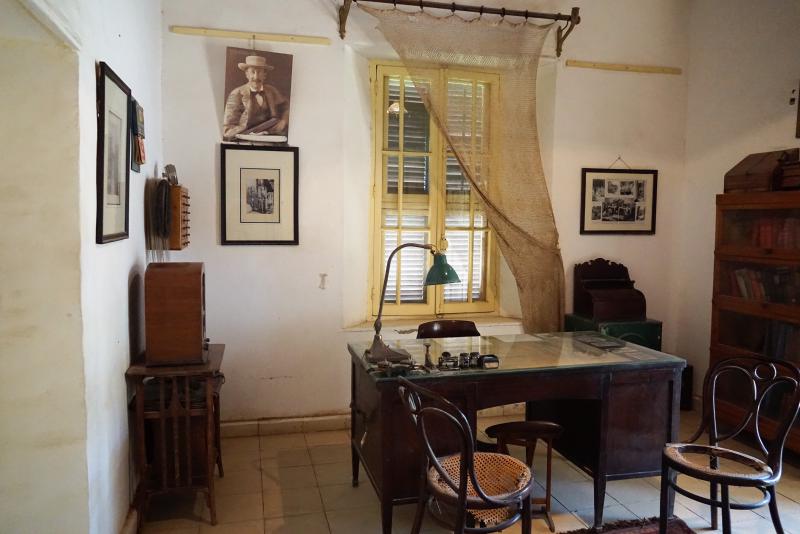
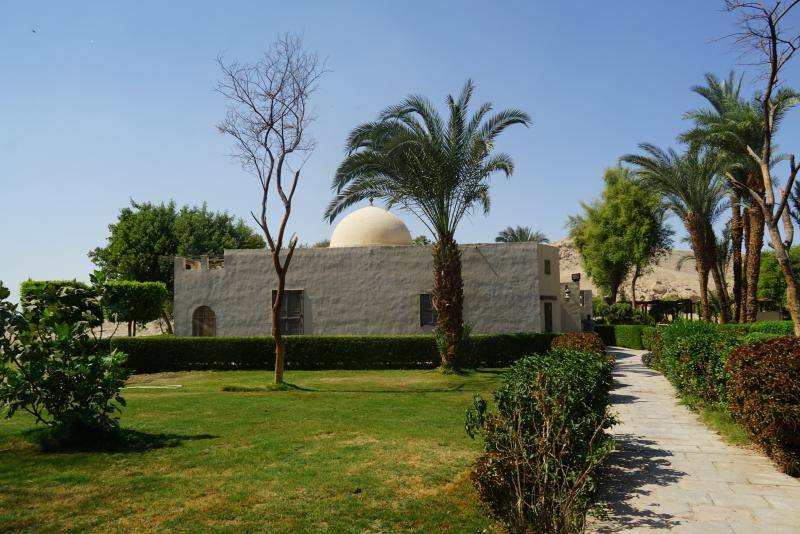
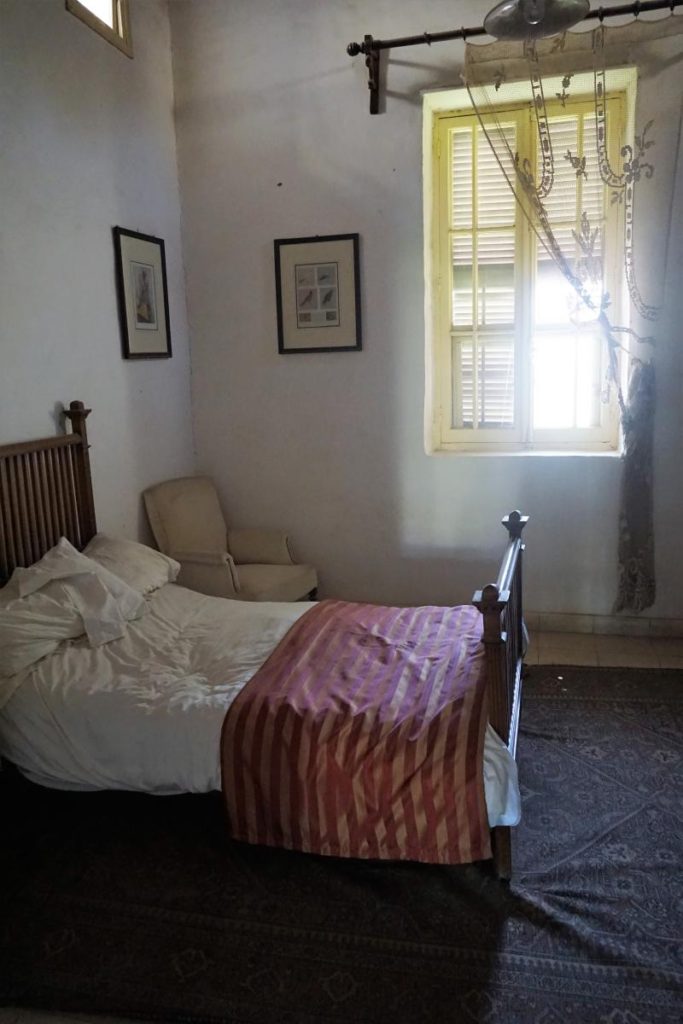
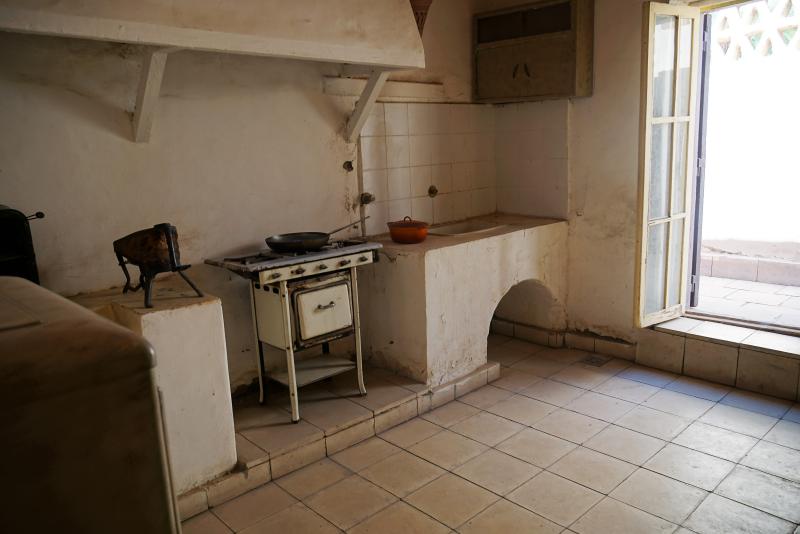


35 Comments
Julien
Wow, all of the temples and carvings with original colors in Luxor are really special. The huge columns and Spinx statues caught my eye as well. A really interesting part of the world!
wired2theworld
Yes, I was blown away by not only the size and scope of the temples but the fact that such vibrant colors lasted 3500 years!
Sharon
What time of the year did you go? This is a bucket list for me, I have always wanted to travel to Egypt. Thanks for the tips 🙂
wired2theworld
We were there in October. It was still quite hot.
Jan Banerjee
I have been to Luxor many years ago and have enjoyed my stay there viewing the temples and giant statues. One of the greatest mysteries in ancient Egyptian architecture and engineering is that how the massive stones were transported in those days! It is also amazing how the colors of the frescoes are still intact – not faded by the harsh sun for so many years. Thanks for the informative blog post. 🙂
wired2theworld
It is incredible to think of how it was all engineered without modern day technology.
Ann
I have only been to egypt once, on a daytrip from Israel, but I would love to go back and explore some more!
WhereAngieWanders
I would love to visit Egypt I’m just always worried I’m going to end up getting sick there! Your photos and post really make me want to go
wired2theworld
True. My mom got really sick one night in Luxor. So sick we had a doctor come to the room. Fortunately it only lasted 24 hours.
Natalie
Egypt would be amazing to visit and Karnak Temple looks beautiful. Great tip regarding the number of tourists and finding a good guide. Thanks
wired2theworld
Thanks! We really felt that having a guide made all the difference in the quality of our experience.
Jay artale
Luxor looks fabulous. It’s almost too overwhelming to comprehend. Valley of the Kings would be top of my list. Thanks for an amazing post.
wired2theworld
It can be overwhelming. Everything there is on such a massive scale it’s hard to wrap your head around it.
Emese Fromm
I love your photos! Great post, I like how you included tips for the best experience. I hope to visit Luxor Egypt at some point; I love ancient history and there is so much of it there! And those structures are still amazing! Thanks for a great guide, bookmarking it for future reference.
Empty Nesters Hit The Road
I’m so eager to get to Egypt, and Luxor is high on my list! I really love the slide show photos you’ve included in this article–I’m going to have to try that sometime.
wired2theworld
Thanks! It’s pretty much the first time I’ve used the slideshows and I’m happy to hear the positive feedback!
Slavka
Oh, what a great post on Luxor. Thanks for the practical info. I will be following your footsteps when I go there 🙂
Nancy Hann
Wow! So much history and amazing ancient art. I love the bright colors in the market too.Thanks for sharing all the helpful info and your tips as well.
Yukti
I was not knowing about Luxor in Egypt as Pyramids are so much famous that not many people know about this place. I loved the Karnak temple and even the entrance looks so majestic and grand.
wired2theworld
Yes, it’s quite impressive.
Annalisa Fran
I love everything about ancient Egypt… am one of those obsessed with the idea that the Faraos were in touch with alien civilizations… Yet I haven’t been there yet. I would go to Luxor for sure. What can you tell of the cost of the trip?
wired2theworld
It’s hard to say because everyone’s choices for hotels, restaurants, etc, flights are different. I can tell you that the private guide ended up costing us about $100 a day.
Sinjana
I love your galleries in the post. Luxor has such an impressive architecture, can’t believe they are so old. great post!
wired2theworld
Thank you!
Sharon
Everything looks massive, including the temple. What amazing architecture you found in Luxor!
Meet Me In Departures
Going to Egypt to see the pytamids and temples is so high up on my bucket list, it’s unreal. I’m a bit obcessed with ancient ruins. Thank you fos such a good guide on what to do in 2 days in Luxor, I’d love to get to the Karnak temples.
By Land and Sea
This is so fascinating to me. I can’t believe the colors are so vivid after so much time has passed. I would also love to stroll through the markets!
TravelingTulls
Brings back a lot of great memories of our time in Luxor. Yes, those touts can be persistent. We had one follow us as we tried to explore Hatshepsut’s tomb. We tried to fend him off by saying we didn’t speak english, whereupon he switched seamlessly to French and then German.
wired2theworld
That’s funny!
Lisa
Great list! I totally understand you comments about push vendors. A local guide we had in Cairo taught us to say “No thank you” in Egyptian. It worked a treat when we had push vendors. I had one say to me “don’t say no thank you”. So I said it in Egyptian. He just nodded his head and then left us alone.
wired2theworld
La shukran! Yes, usally that works, but not with the guy following us in the market.
sarah
Loved my time in Luxor and it’s so much nicer to overnight as Luxor is far nicer to experience, in my opinion when all the cruise tourists have left. I do remember too that the vendors were very persistent here which was a shame as I actually to buy souvenirs but ended up walking away empty handed. Good for the wallet though!
Jen Mostert
I have always wanted to visit Egypt. Your photos and tips have motivated me to start planning… finally!
wired2theworld
It’s worth it for sure.
Rhonda Albom
Luxor has been on my bucket list for far too long. Your photos are so inspiring, and you have captured some really rich colours. It’s the details that make it so interesting to me.